Dear friends,
Last month I was lucky enough to spend just over two weeks in Morocco, traveling as I have done many times with a group organized by Wilderness Travel (www.wildernesstravel.com). Just days before our trip, there was a devastating earthquake in the High Atlas Mountains which killed thousands, destroyed many villages, and was felt across the southern part of the country. My heart went out to those families and communities so devastated by the earthquake.
However, after some serious considerations and long discussions with the tour company and the on-site guides, I decided to continue with the tour as did the other twelve who had signed up. Everywhere we went, the people thanked us for not canceling and apart from changing one hotel in the mountains which had some damage and seeing major repairs being undertaken in the old centre of Marrakesh, our travel was unchanged and we loved all the places we were able to visit as planned.
The Moroccan flag flies over the Atlantic Ocean at Rabat, the capital city. Red is the color of the
reigning Moroccan dynasty and the green 5-sided star,
known as the ‘Seal of Solomon’ shows the link between the nation and God.
Having wanted to visit Morocco for quite some time, I was drawn to this particular trip entitled ‘Camels to Casbahs’ by the ‘blurb’ in the Wilderness catalogue. They wrote: ‘Morocco has a unique allure – mysterious casbahs, labyrinthine souks, ancient medinas, and minaret-studded imperial cities. Influenced by Berber, Arab, Jewish, sub-saharan, and Mediterranean cultures, its heritage is complicated and fascinating. We’ve designed an adventure that unlocks the country’s secrets as we roam the mesmerising bazaars of Fes – the 9th Century walled city suspended in time like a medieval dream – cross the High Atlas Mountains to hike the craggy, red-rocked Todra and Dades Canyons, meet Berbers in their mountain villages, and visit seaside Essaouira, an artists’ haven. As a special treat, we’ll enjoy our own private tented camp cradled in the sun-splashed dunes of the Moroccan Sahara. Along our way, our Trip Leaders bring the country’s history and traditions to life as they introduce you to Morocco’s welcoming people, sumptuous flavours, and astonishing natural beauty.’ And the trip did not disappoint.
In addition to the itinerary shown in black on this map, five of us did a three-day trip to Chefchaouen,
the city often called the ‘Blue City’ in the north of the country, which is shown by the red line on the map.
The road north from Casablanca to Chefchaouen, took us through a rolling landscape,
the fields brown as a result of several consecutive years of drought
A lunch stop on the way – no meal is complete without a glass of sweet
mint-flavoured Moroccan tea, and the pouring is a key element of the experience.
So this first, of what will be a series of Joanna’s Journal blogs, will be about our visit to Chefchaouen and the short hike in the Rif mountains. I have to admit to getting a little carried away with the photos as it was just so picturesque and a joy to wander in the little streets and alleyways. But I have whittled them down and hope you will enjoy immersing yourself in the blue as we did.
Our first view of the city, as we drove over the hills
The city was founded in 1471 as a military outpost shortly before the Spanish reconquering of Granada, and its population grew quickly with Muslim and Jewish refugees fleeing from Spain. The economy is based on a traditional agro-pastoral system with olive and fig plantations; numerous water mills for grinding grain and olives; a handicrafts sector focusing on leather, iron, textiles, and carpentry; and summer-dominated tourism.
A fresh coat of paint – on the walls, doors, and pavement too
Why so blue? Chefchaouen’s blue walls are a popular subject of interest. There are several theories as to why the walls were painted blue. One popular theory is that the blue keeps mosquitos away. The blue is said to symbolize the sky and heaven and serve as a reminder to lead a spiritual life. However, according to some locals, the walls were mandated to be painted blue in the 1970s to attract tourists.
Other colours to choose from but clearly blue dominates
The charming reception area in our Riad where we stayed for the three nights in the city
Just one of the calm blue sitting areas around the riad
Even my bathroom was blue on blue, as was the decor in the bedroom
Early morning wandering and the alleys were still quite deserted
Just a few people and out and about
But the smell of fresh bread indicated that some were already hard at work, baking …
… and selling fresh bread
Setting up the stalls with locally made goods
Waiting for customers
Enjoying a quite moment on a handy bench
Plenty to choose from if you are in a ‘buying’ mood
Waiting for customers, or maybe just contemplating life of a morning
Silver and brass items, leather goods, jewellery, ancient treasures and more
Colourful carpets and shawls artfully draped
And other carpets to choose from
Or maybe it’s time to stop and have a cup of tea of an orange juice
So many little streets and alleys to follow and explore
Steps and archways, and more steps leading up to houses and riads
and more steps and every kind of design you can think of, but always blue
Blue on blue on blue
Many also adorned with plants and flowers
And then there were the doors and doorways to the houses and riads, often so welcoming
Doors tucked away down alleyways …
… and at the bottom of flights of stairs
Every shade of blue and so often with the arches influenced by the Andalusian architectural style.
Chefchaouen was home to Andalusian families between 1492 and 1609, when the last Moriscos (Moors) were expelled from Andalusia by King Felipe III. These Andalusian families built their own residential quarters surrounded by walls, in the Andalusian architectural style, very similar to the Arab quarters of Granada.
Our guide in Chefchaouen was Amina, interestingly the only woman guide in the city, and very knowledgeable
Some fancy and fun artwork around this doorway
A magnificently decorated archway as entrance to this guest house
And another equally welcome entrance to this home
And the doorways and houses were not only for the locals and visitors but for the cats …
… and there were many cats throughout the city
As a cat lover, I just had to photograph them.
The others in the group were also quick to point them out to me – “Joanna, here’s another one”
For example, just how picturesque is this!
Just ambling along the wall or …
… looking for food or wanting to enter this house …
… or posing for the tourists
Nearer to the town square, the alleys were wider …
… and there were more public buildings like this hamman (traditional bath house)with the steam escaping from the top
Another square surrounded by beautiful houses and shops and a public well in the centre
The Grand Mosque of Chefchaouen is the city’s oldest and historically most important mosque,
located at Place Outae Hammam at the heart of the medina, close to the kasbah.
While we were in the main square we met another of the city guides,
handsome in his traditional djellaba, and he was not shy in showing us the pants worn underneath
Abutting the main square was the Kasbah (castle) and this is one of the towers
The view from one of the windows of the tower, looking over the gardens of the casbah, to the city and the mountains beyond
We were offered a delicious lunch in the house of Said and his family, the table ready and waiting for us
We started with a typical plate of salad …
… which was followed by a spicy chicken tagine and rice, although often it is accompanied by couscous
Said waving us goodbye from his balcony after our delicious lunch
After a more relaxed afternoon, because it was quite warm, we spend an hour or two on the roof of our riad,
with a glass in hand, plenty of chat amongst our group and a lovely sunset
We were amused by the antics of the chickens on the next rooftop and their caretaker
One evening we hiked up to the Spanish Mosque, and from our roof top it looked fine against the evening sky
Our last day in Chefchaouen, we took a side trip to the Akchour Cascades which involved a one-hour drive into the Rif Mountains and then a lovely and not too taxing hike alongside the Akchour River. Although it was clear from the numerous cafes and resting areas along the way that this is a popular hiking area, we were fortunate that there were few other hikers that morning
Driving up the Akchour valley before we got to the drop off point for our hike
There were several weirs and dams across the rive which made for swimming and relaxing areas
One of the many cascades along the trail, and even here a small terrace under the trees
Teapots lined up, ready for thirsty hikers
Colourful flowers along the way caught our eyes, and cameras
A perfect sport for lunch beside one of the waterfalls
Kettles boiling and tagines simmering outside one of the restaurants
Vegetables and spices ready to be added to the tagine for a tasty meal
And not far off, a stall selling several varieties of olives, was doing a brisk trade
After a last evening in the beautiful blue city of Chefchaouen, we bade farewell to the delightful staff of the Riad and we boarded the bus for the 5-hour drive back to Casablanca where we were to meet with the other eight members of the group for the main tour around Morocco.
I hope you have enjoyed this ‘blue, blue’ blog as much as I did putting it together, and perhaps you might put this city on your own Bucket List. I certainly could recommend it as one of the most pleasant, interesting and visually attractive cities I have had the pleasure to visit.
The next ‘Joanna’s Journal entry will be about our visits in Casablanca and Rabat.
Until then, wishing all my friends and followers all the best.
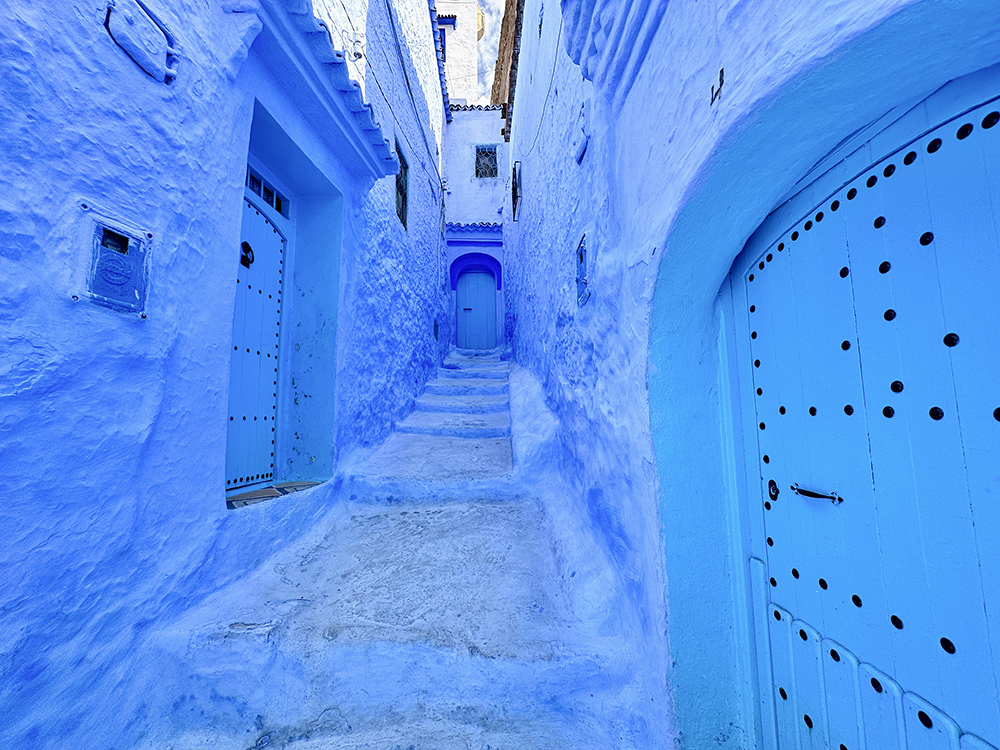
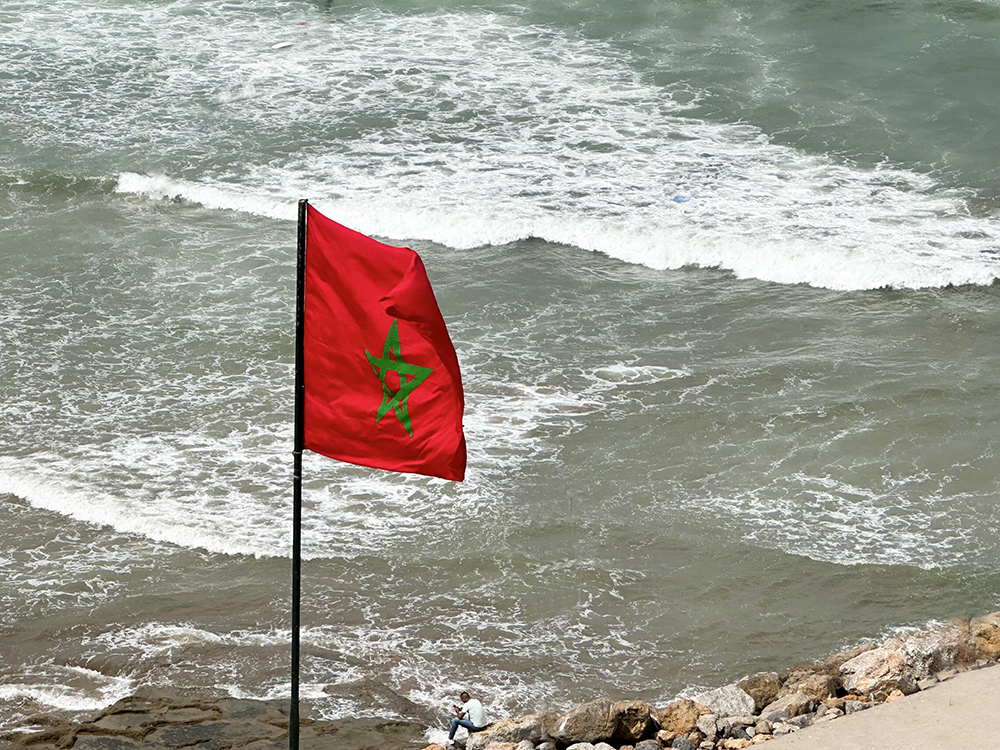
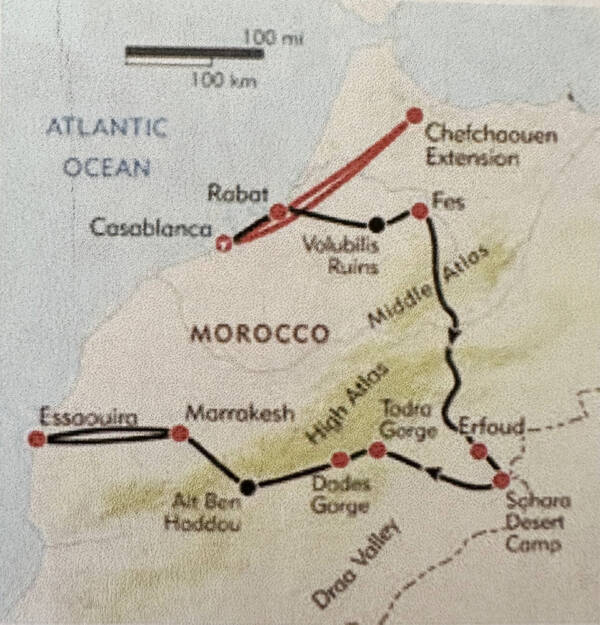
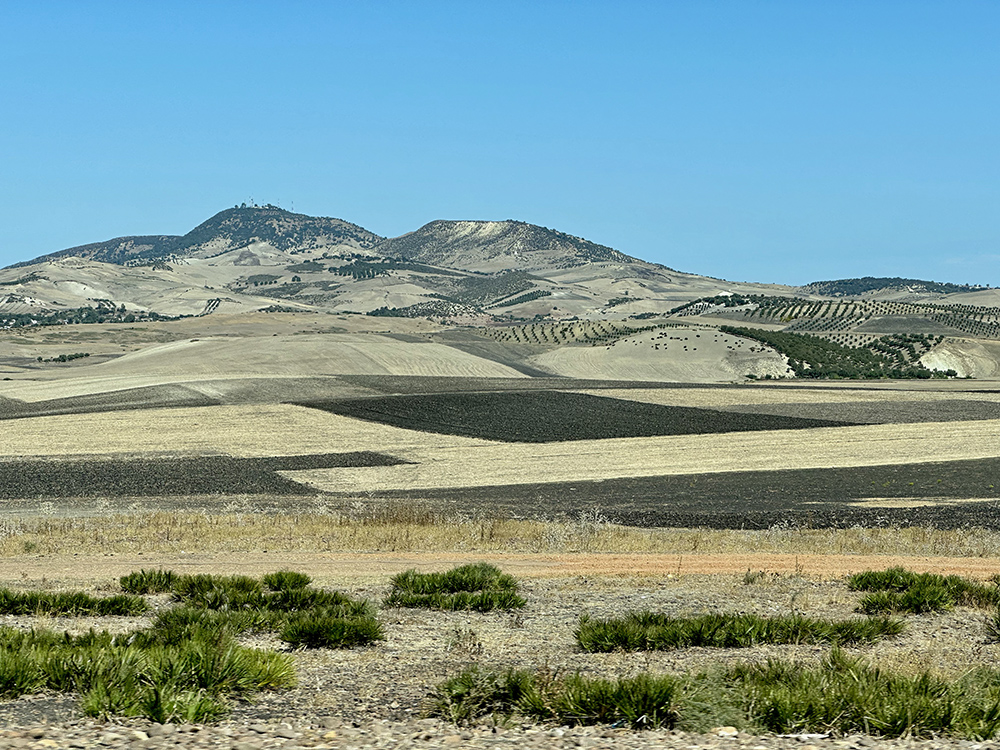
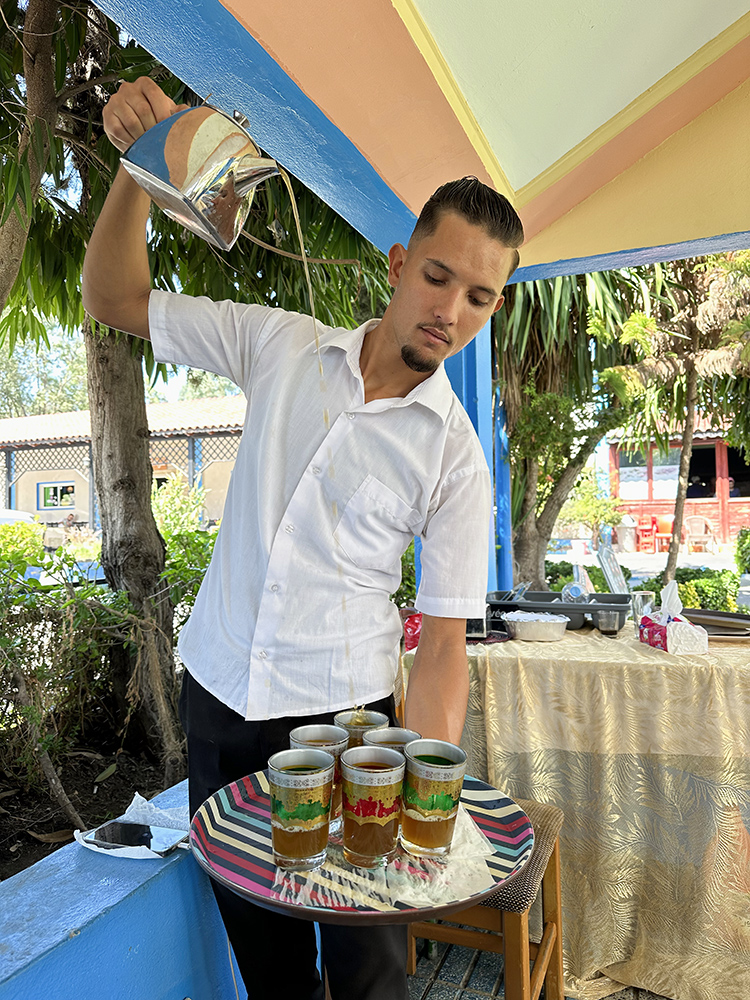
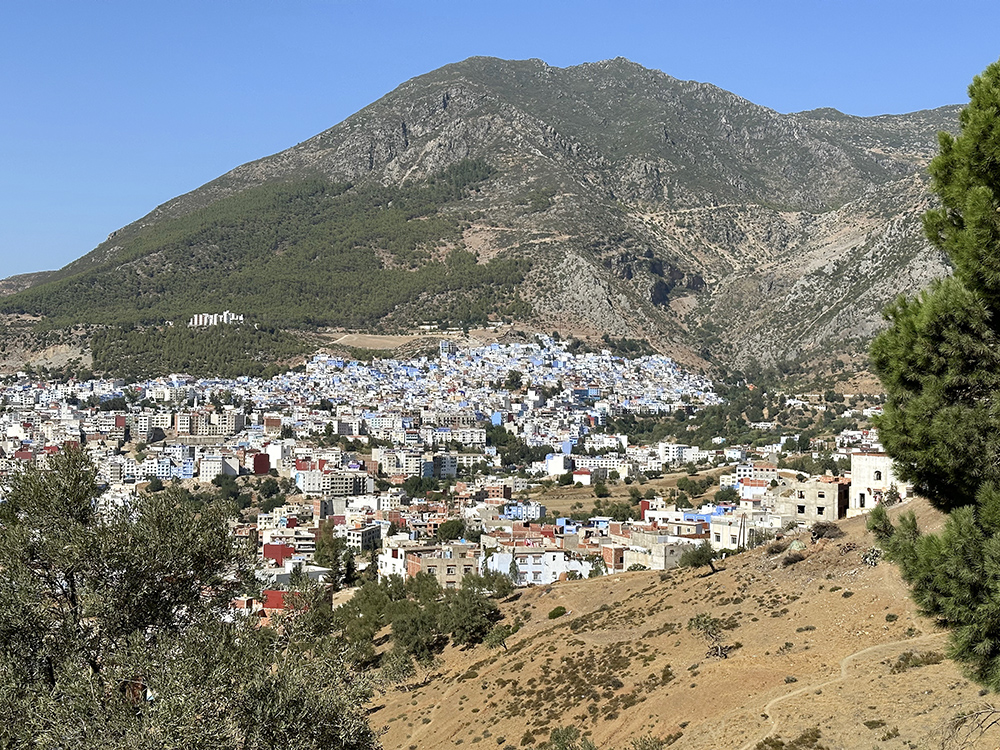
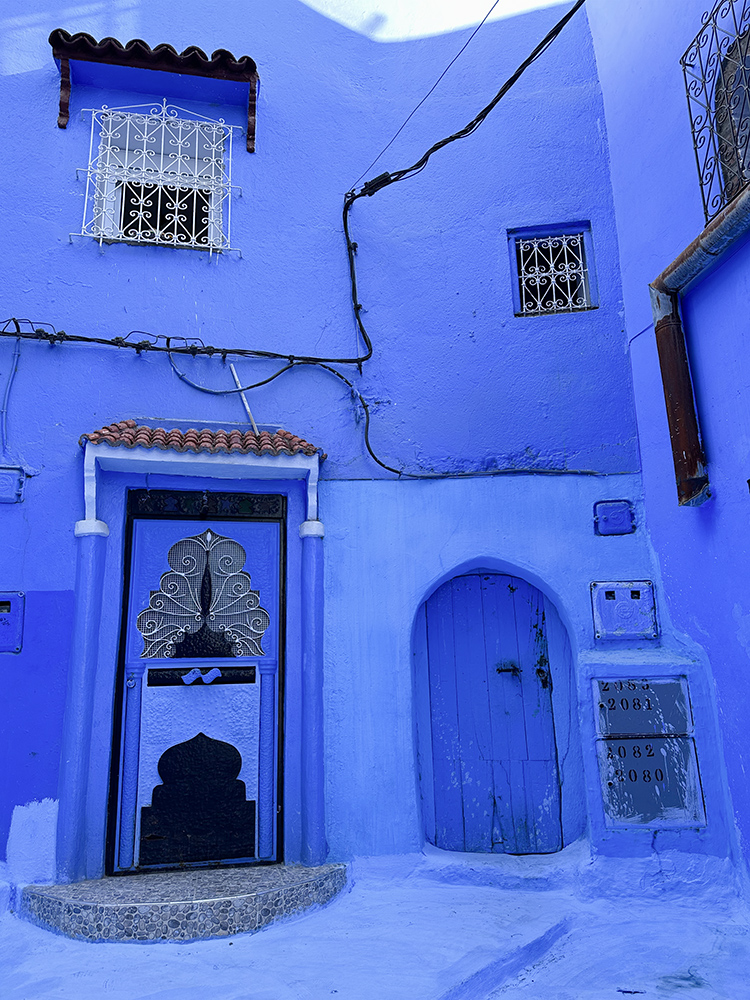
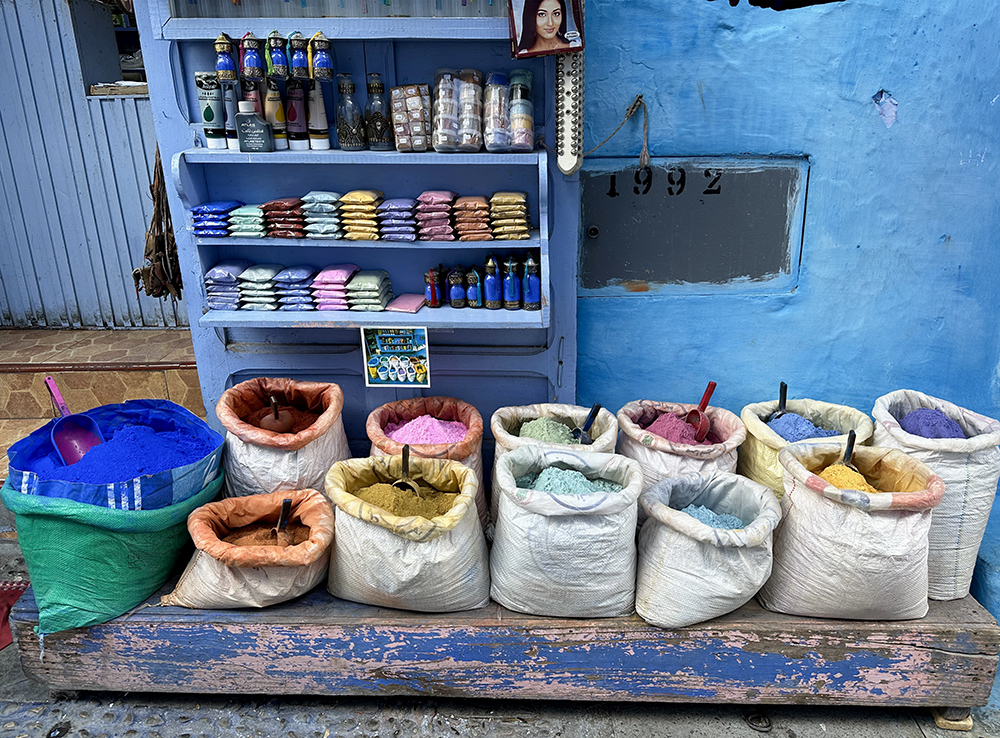
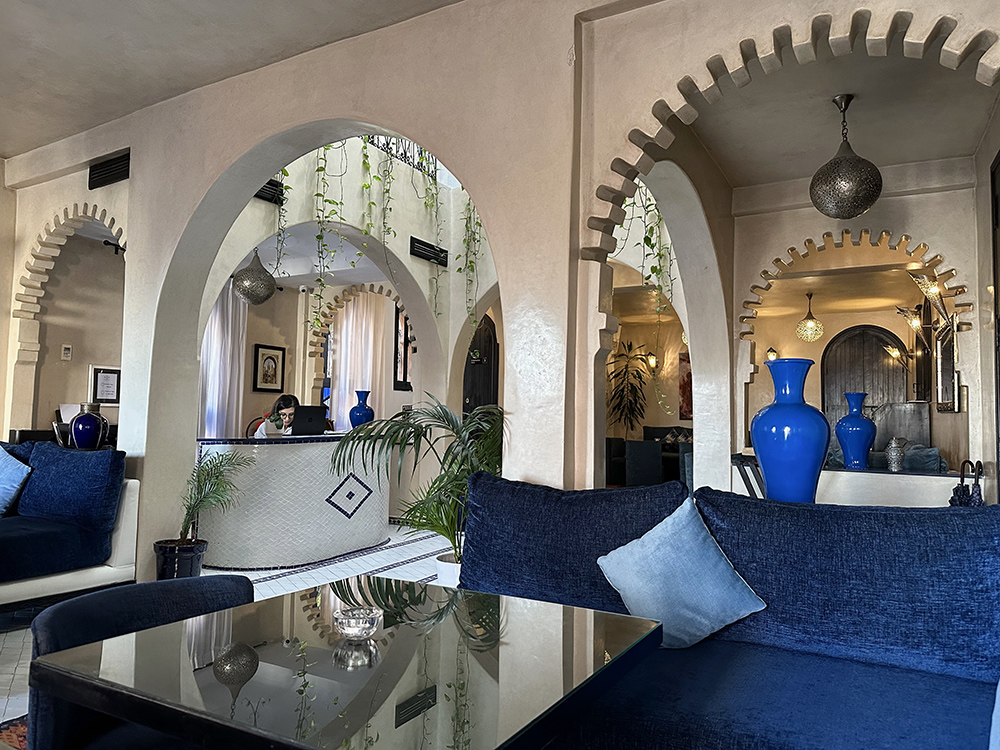
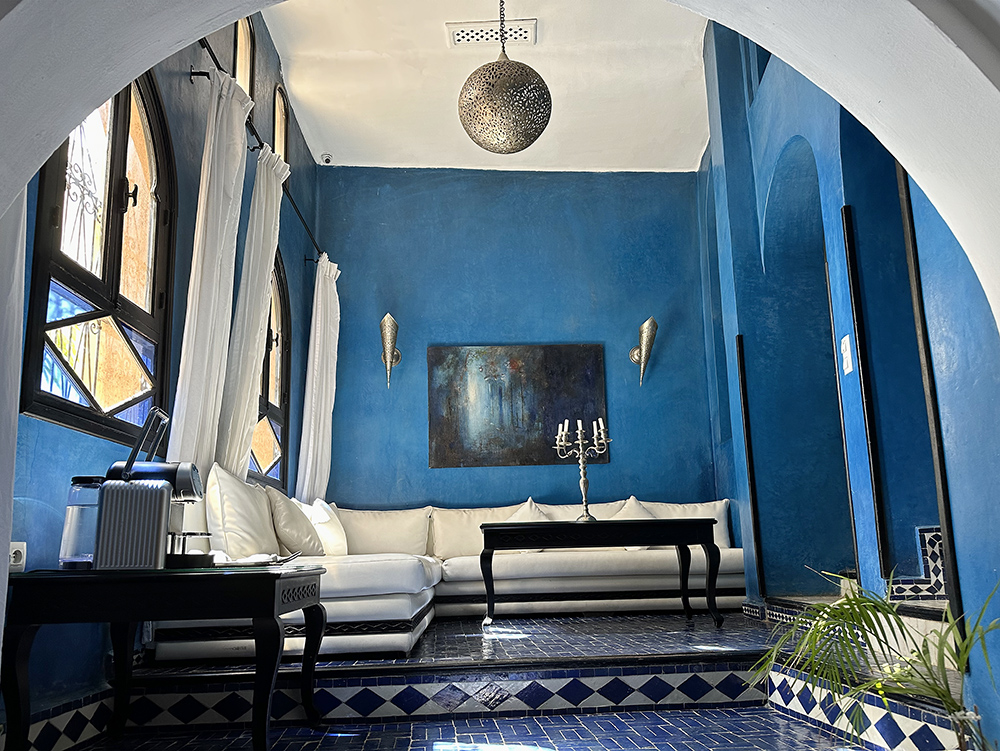
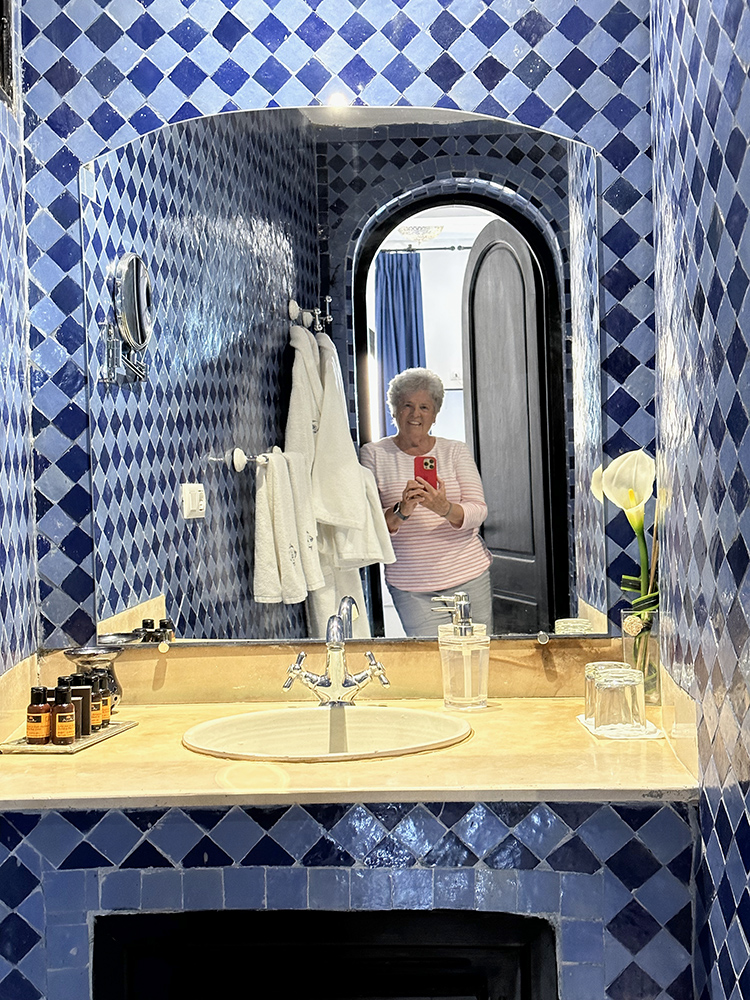
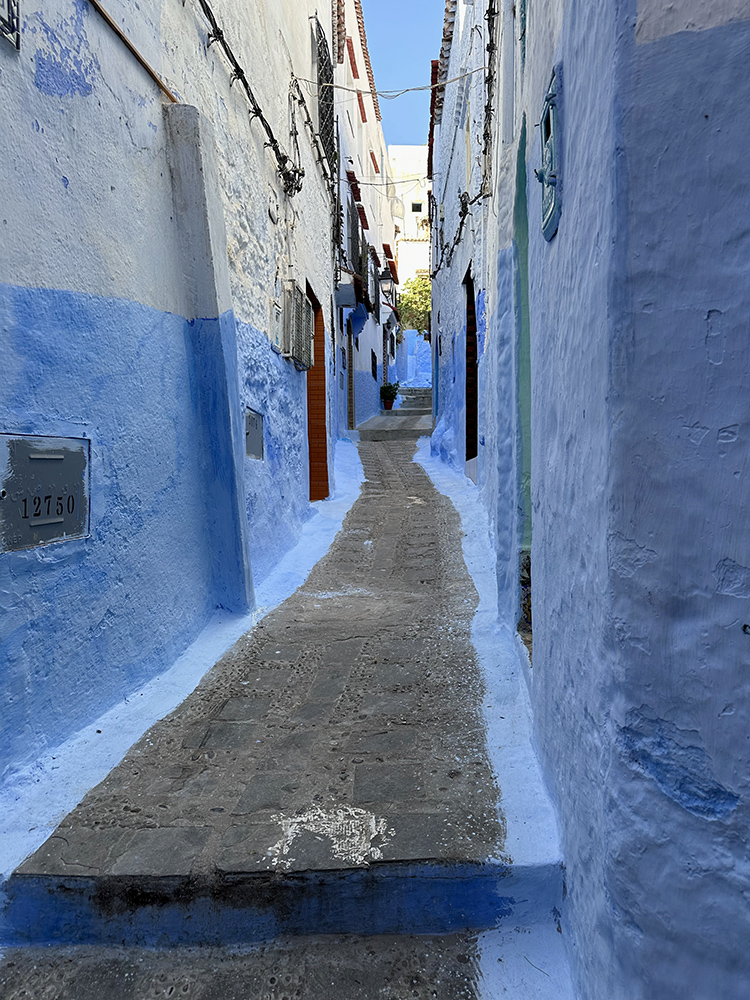
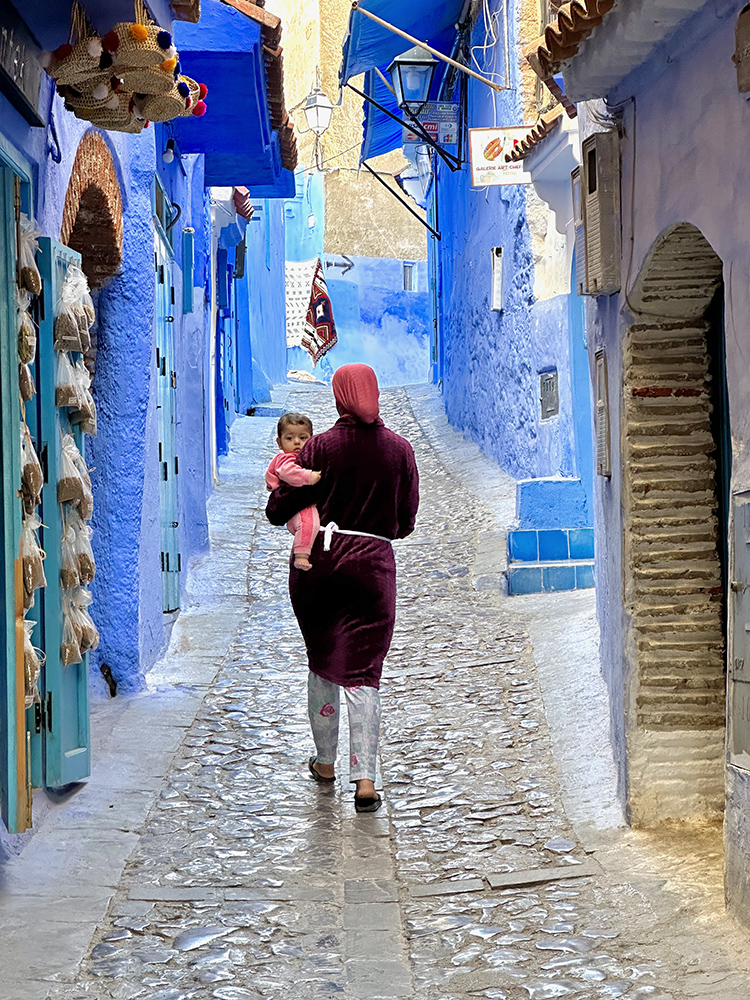
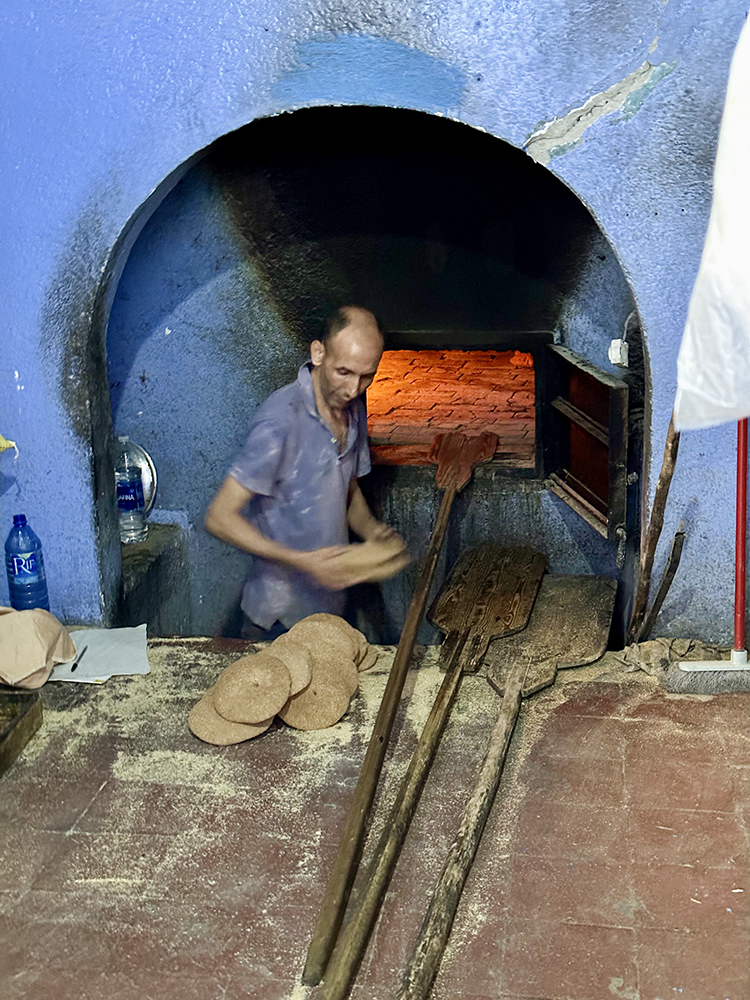
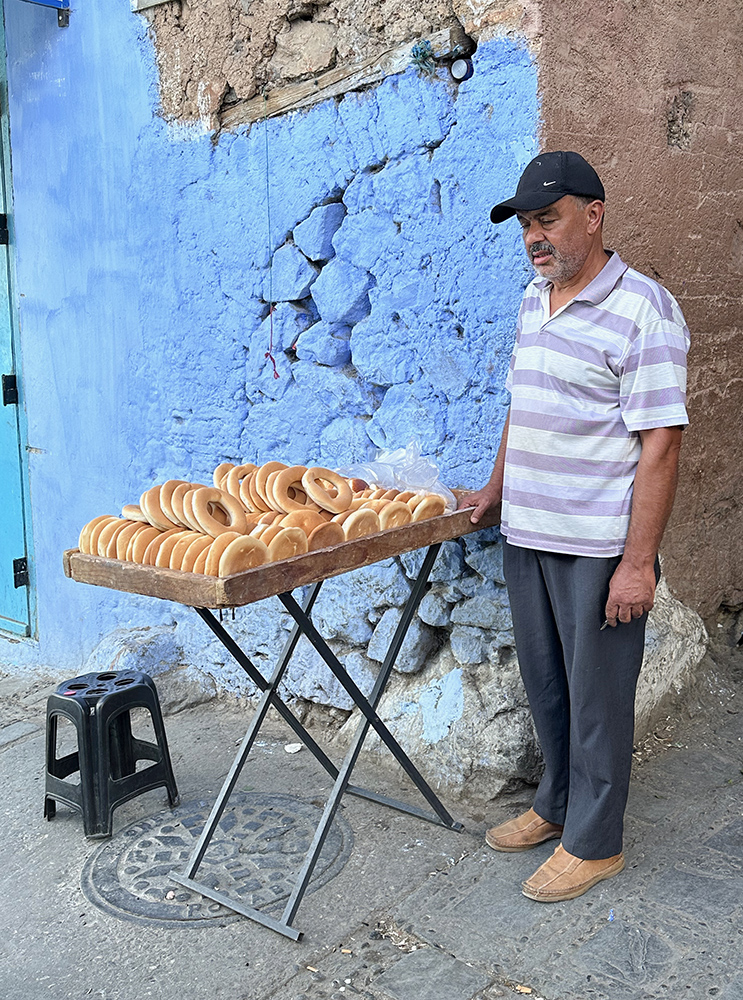
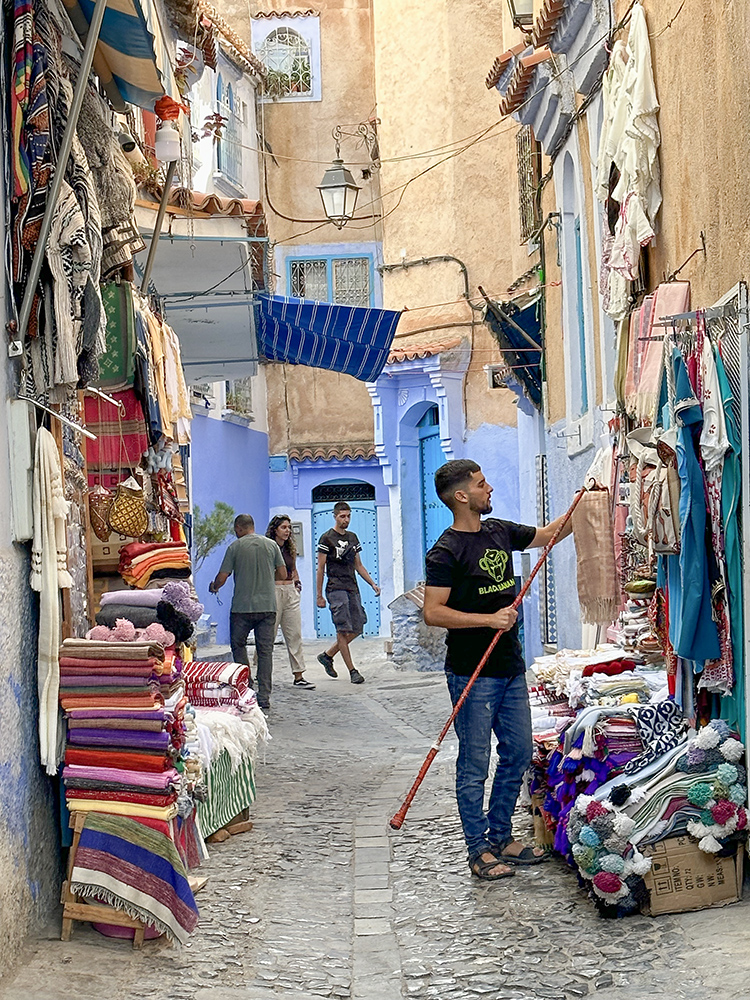
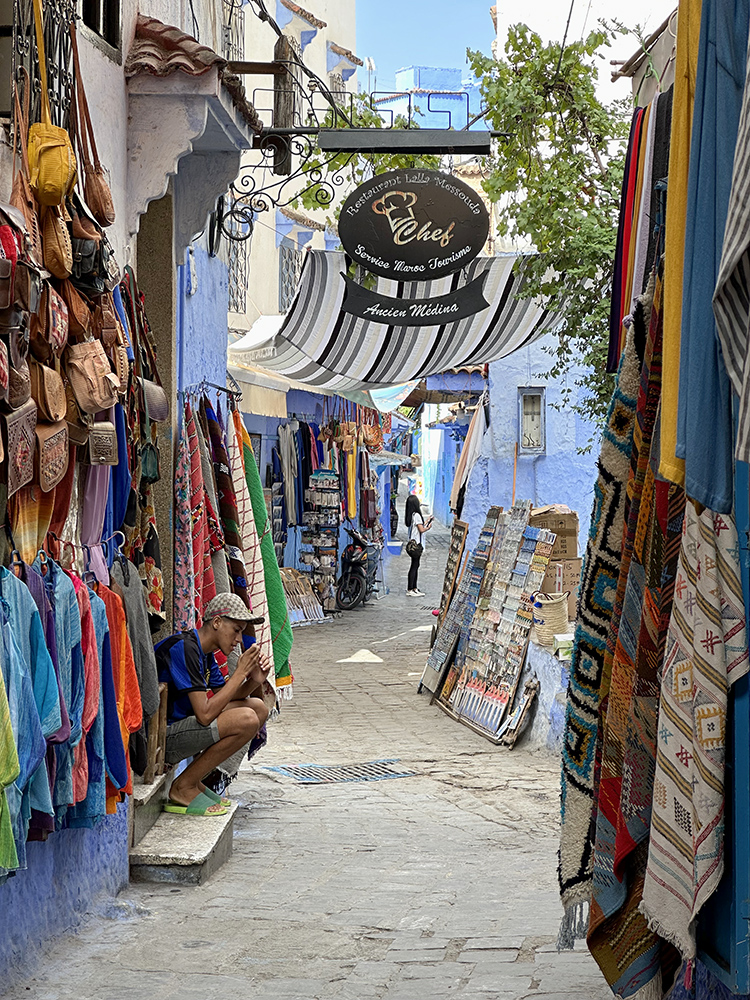
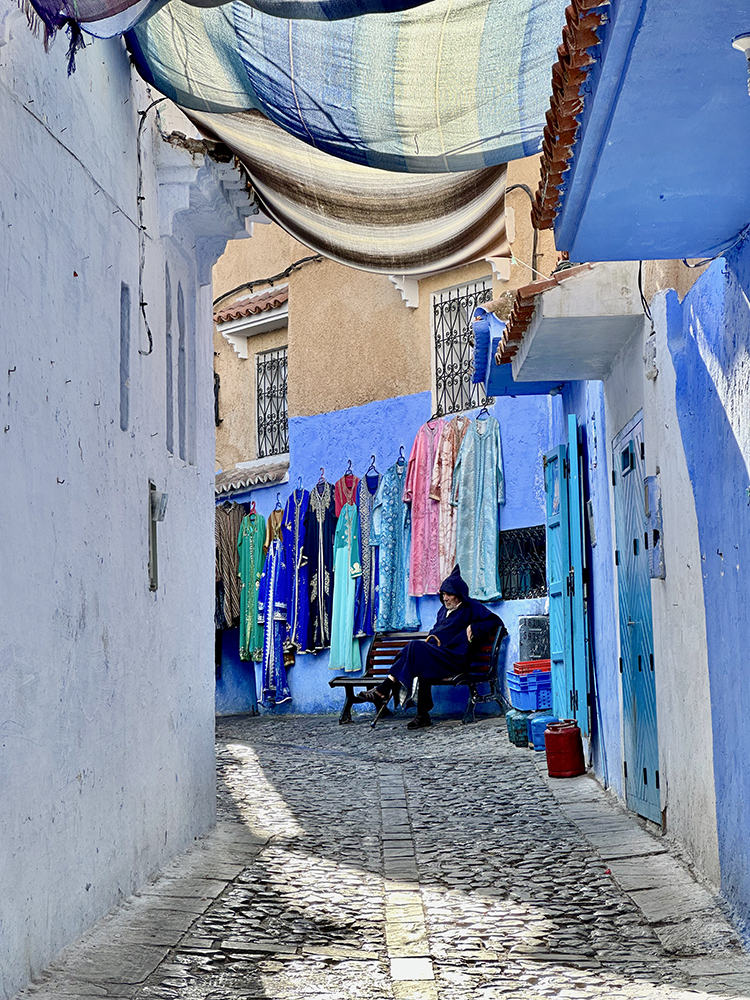
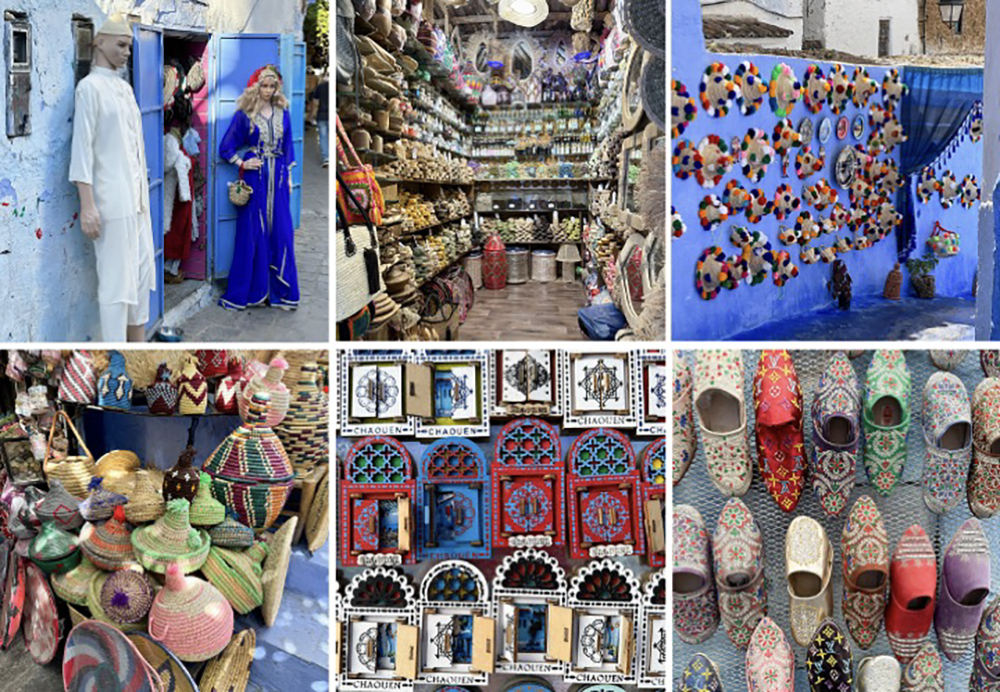
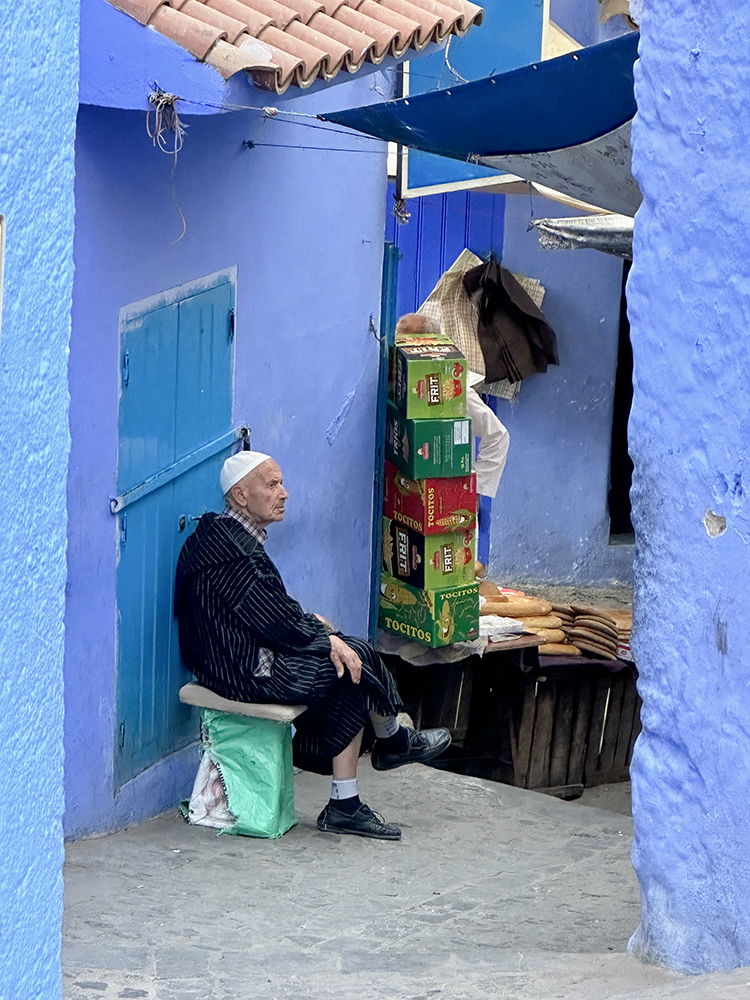
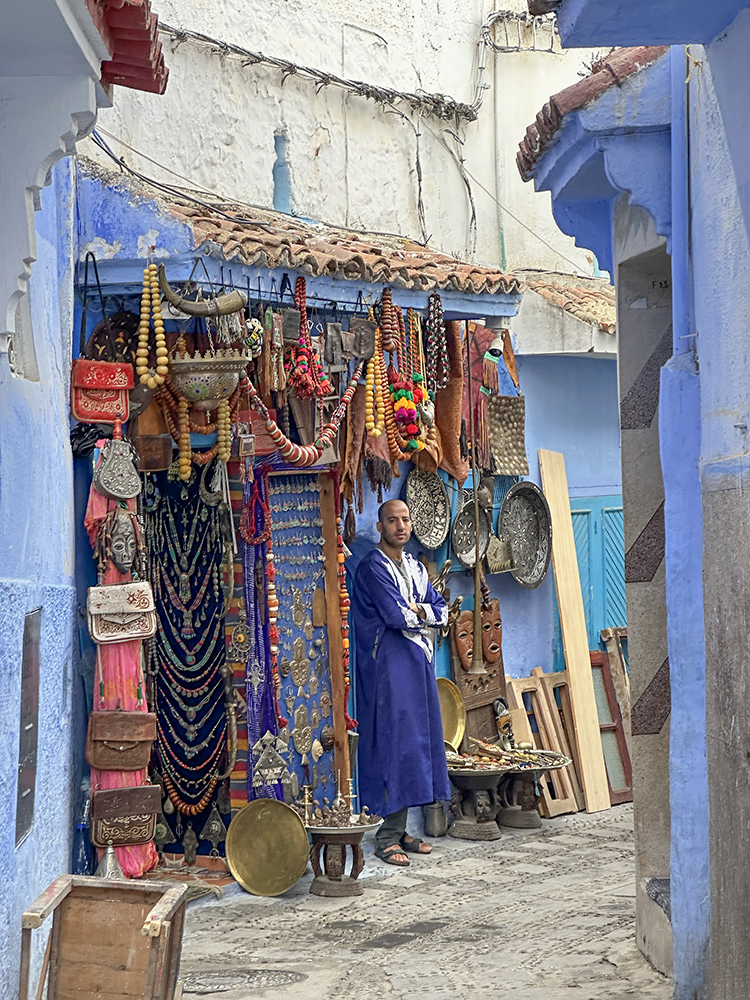
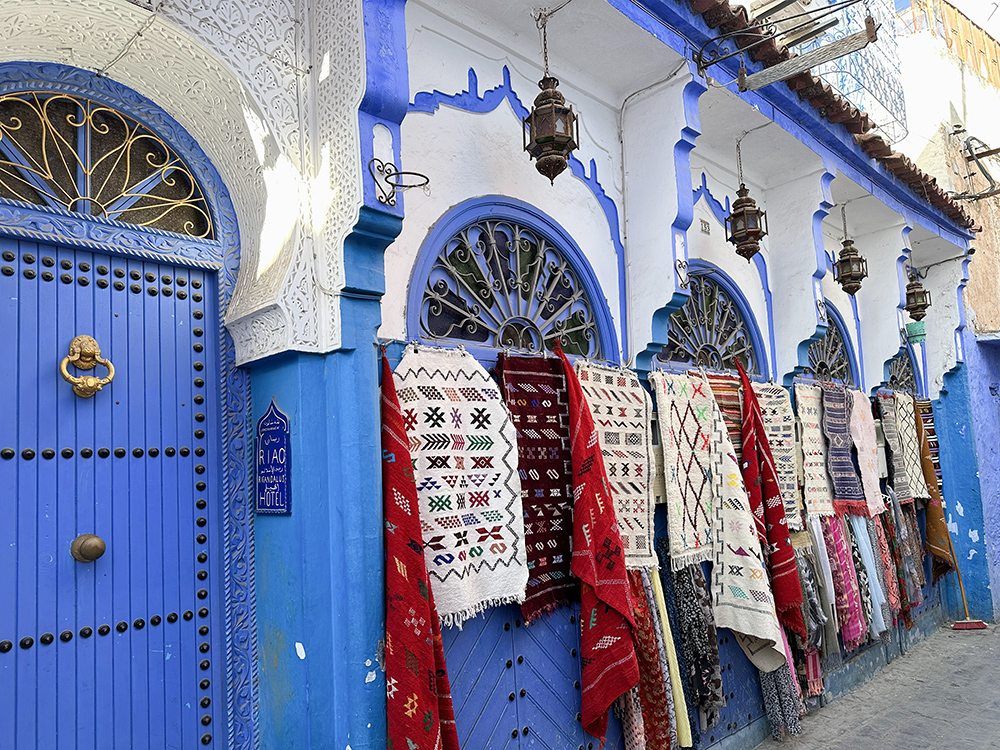
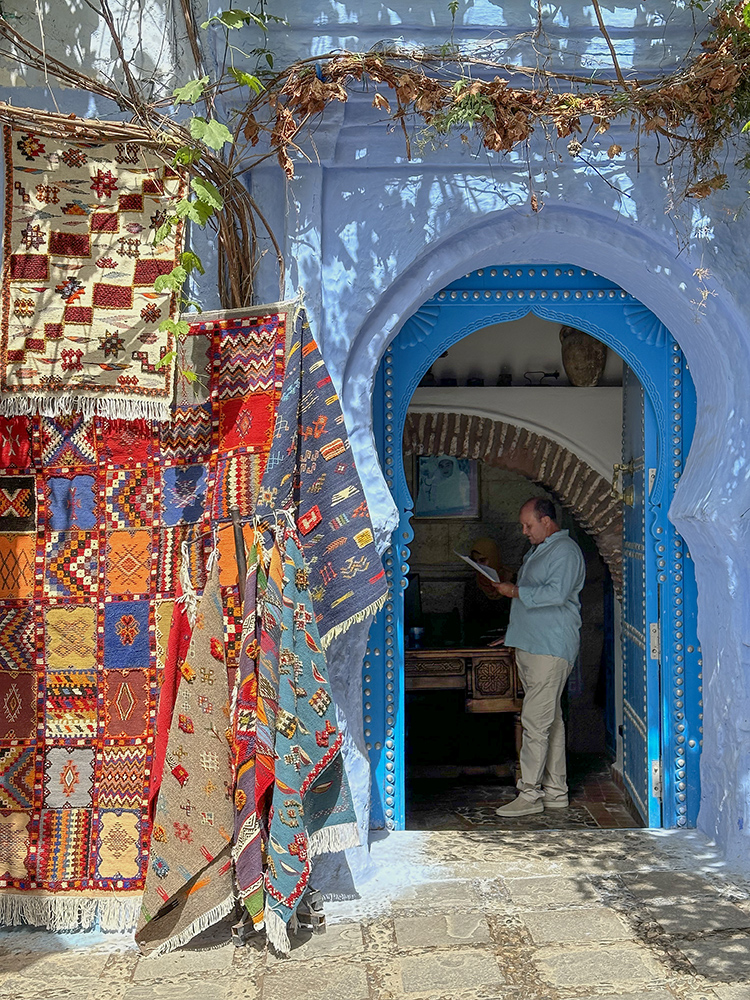
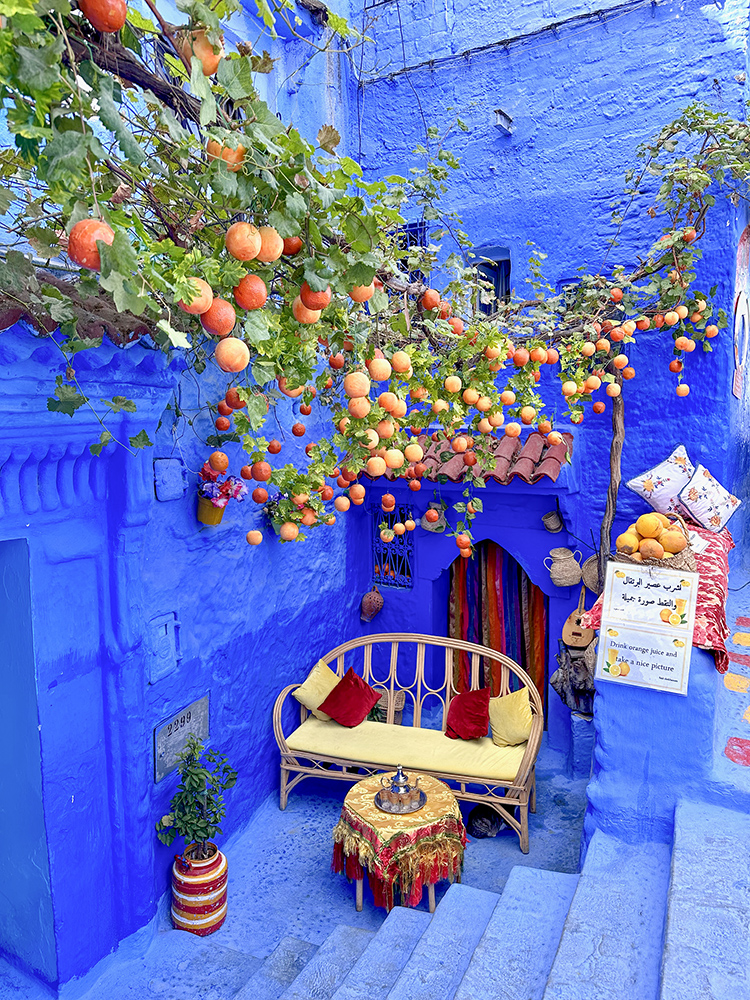
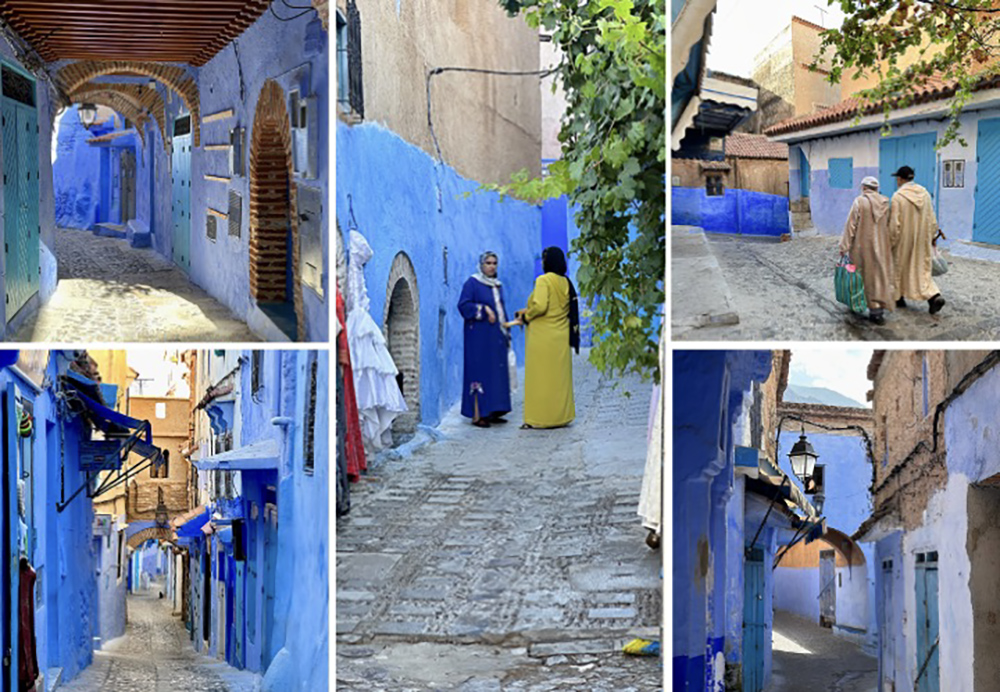
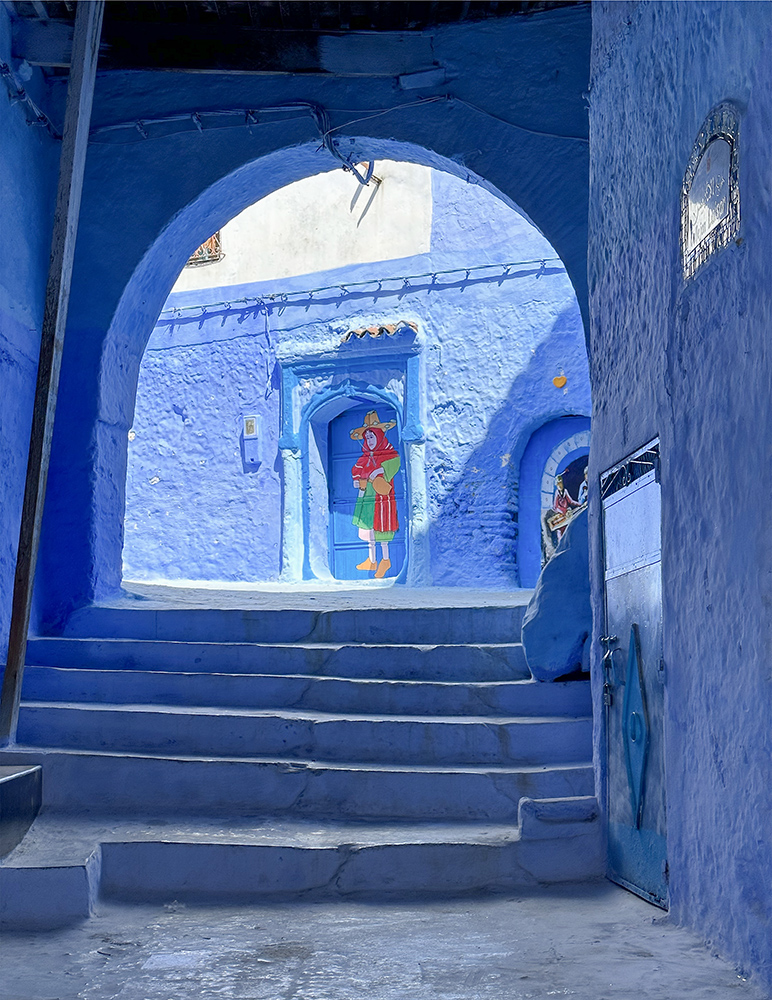
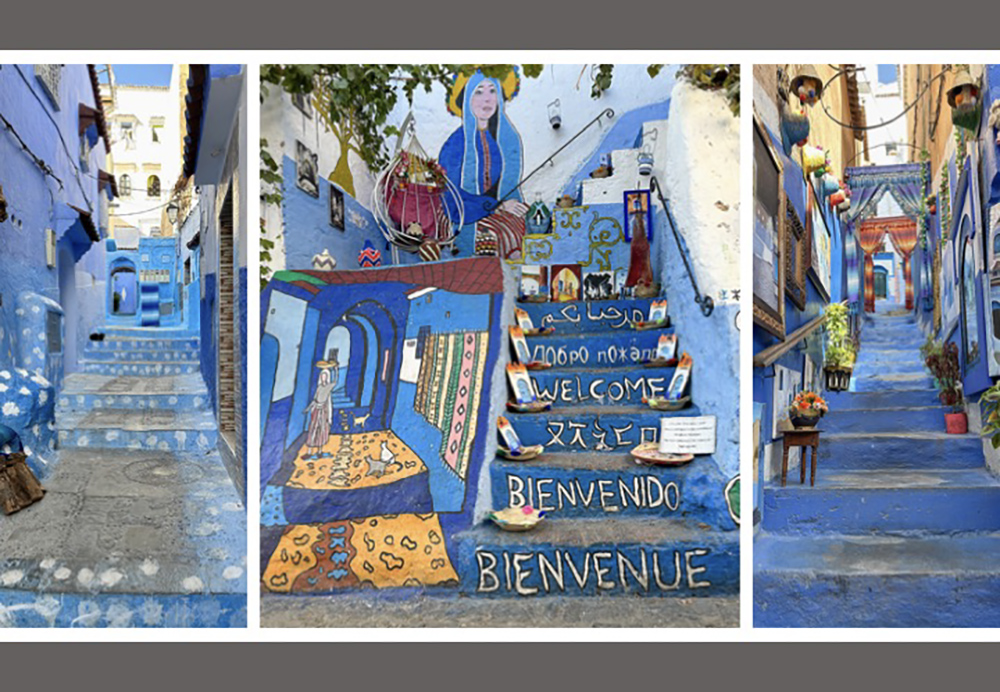
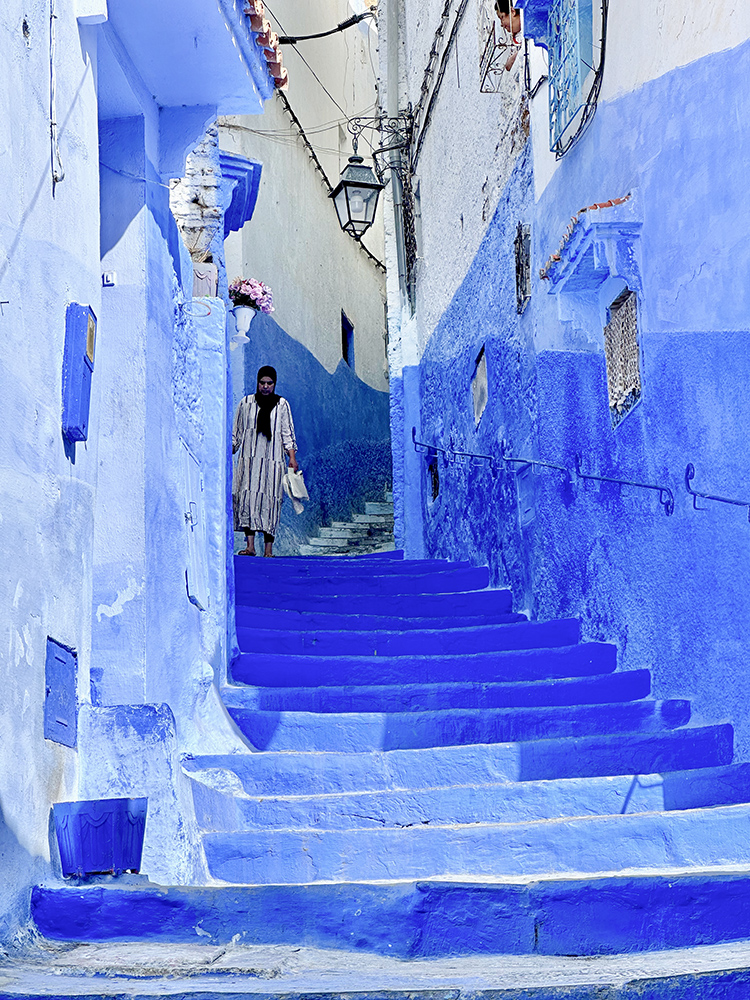
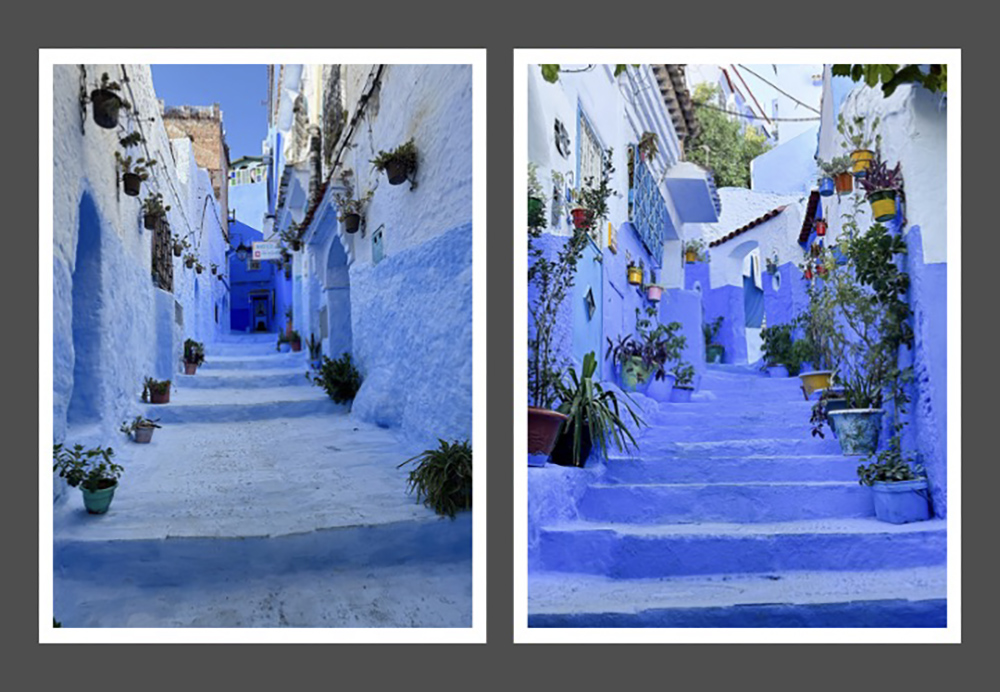
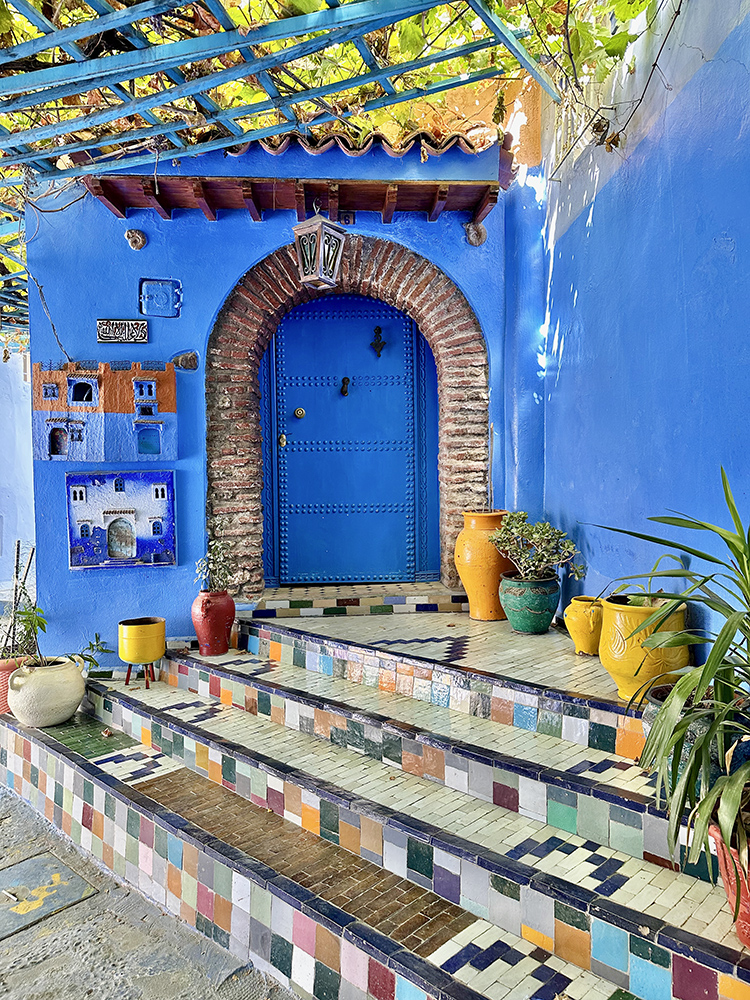
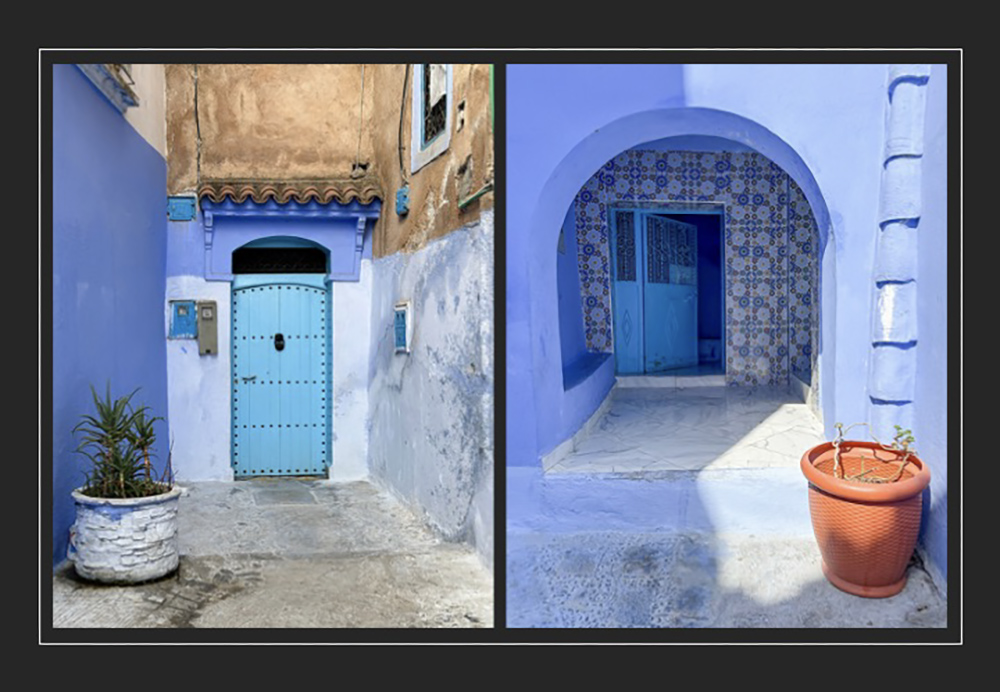
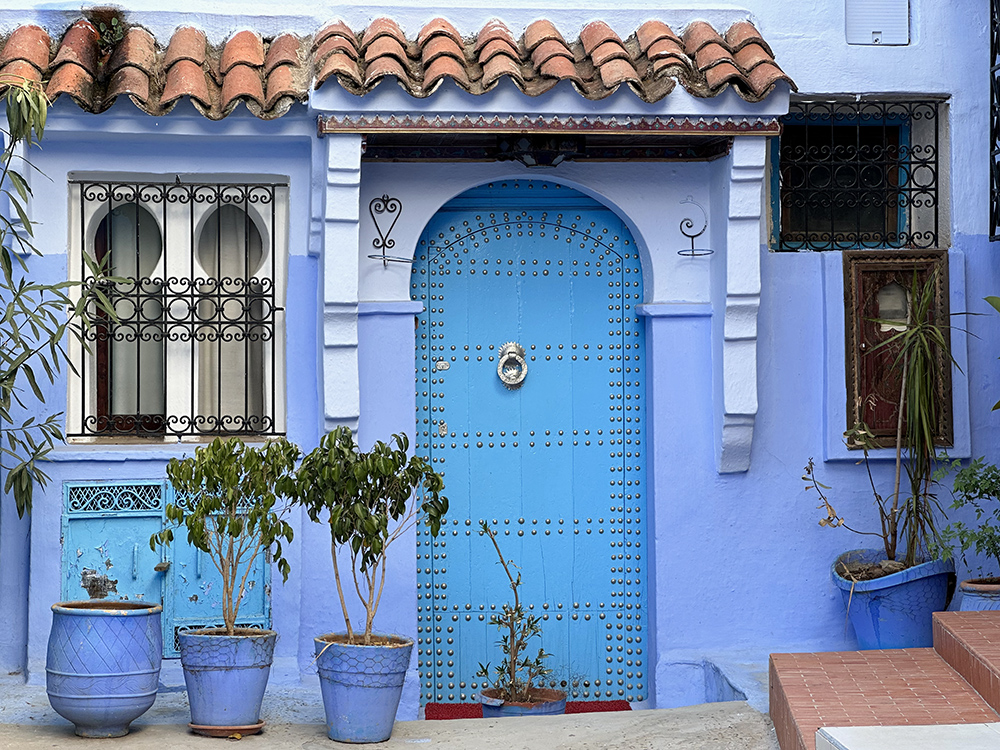
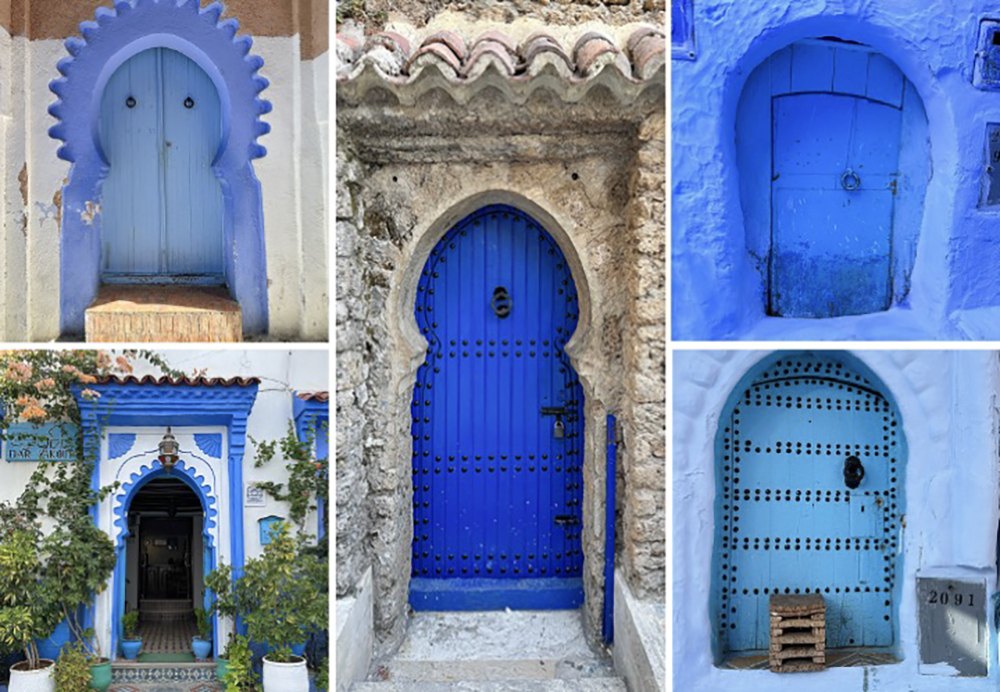
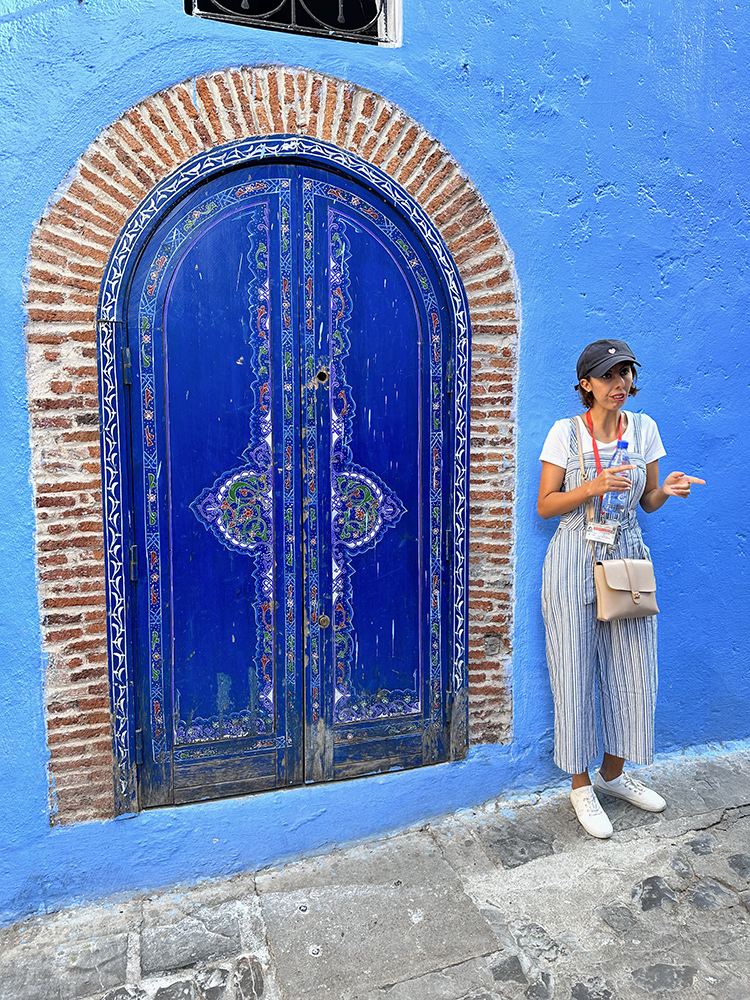
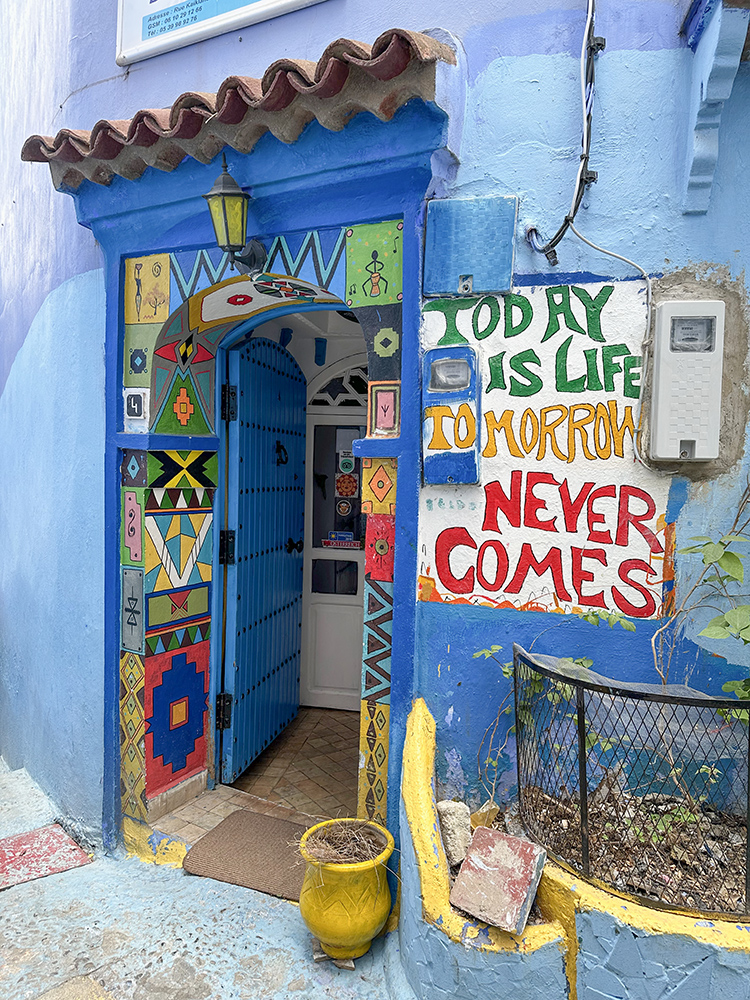
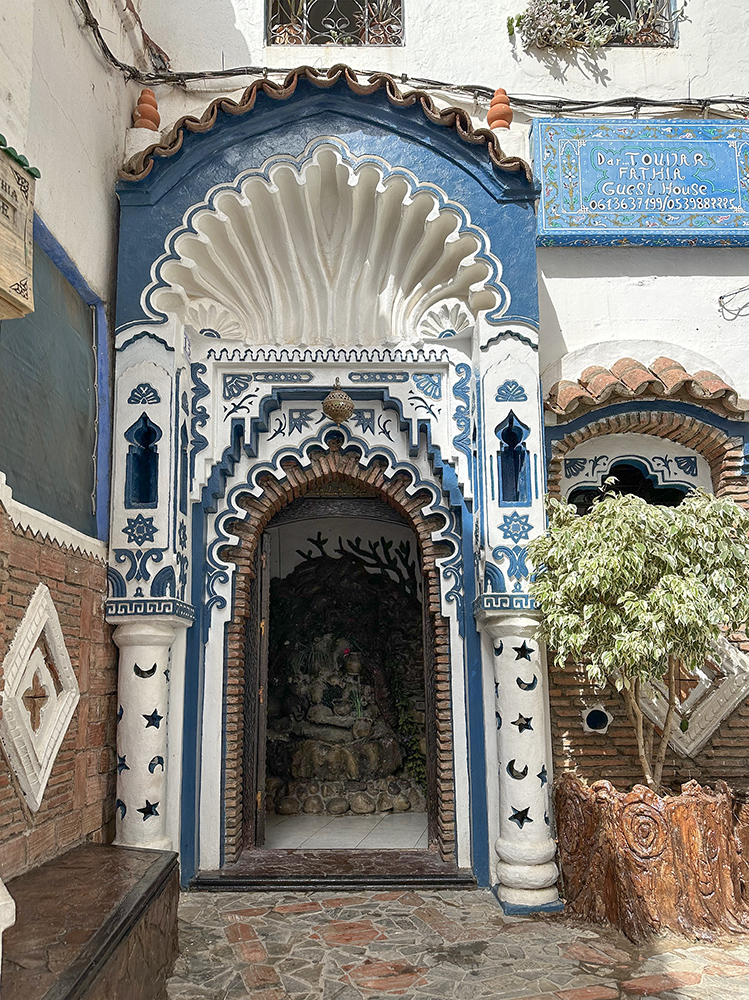
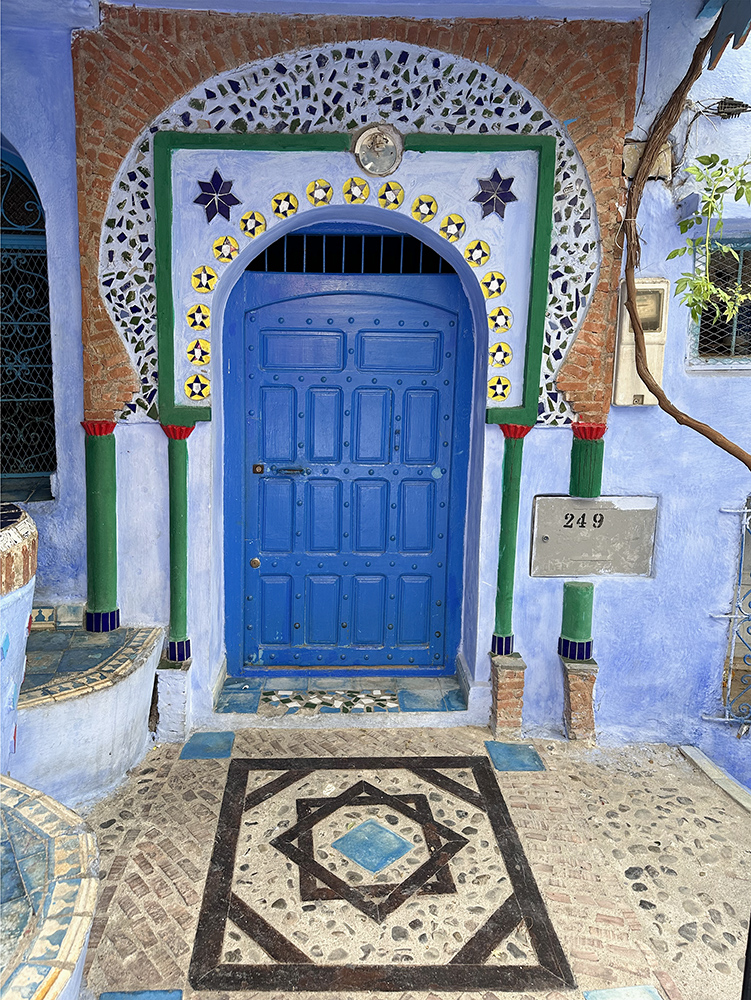
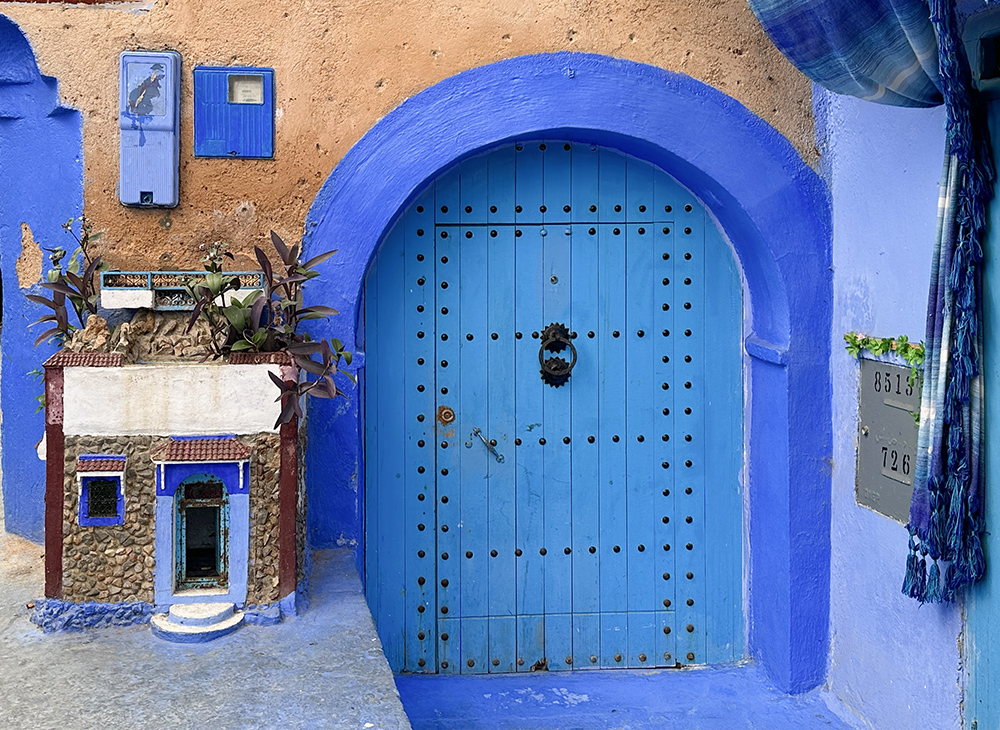
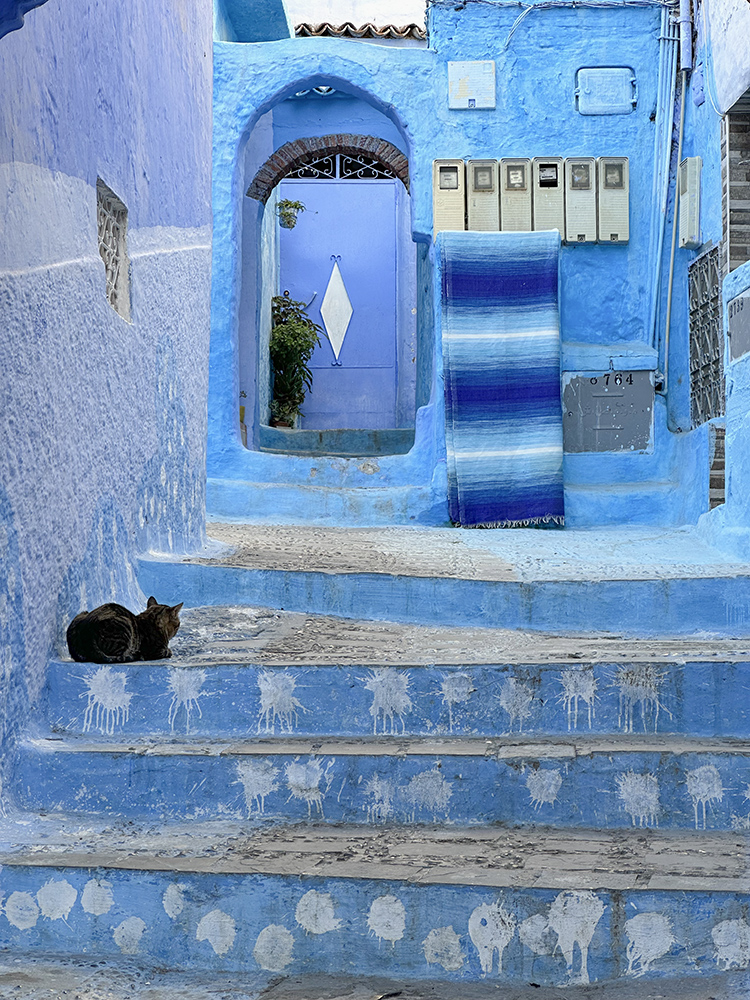
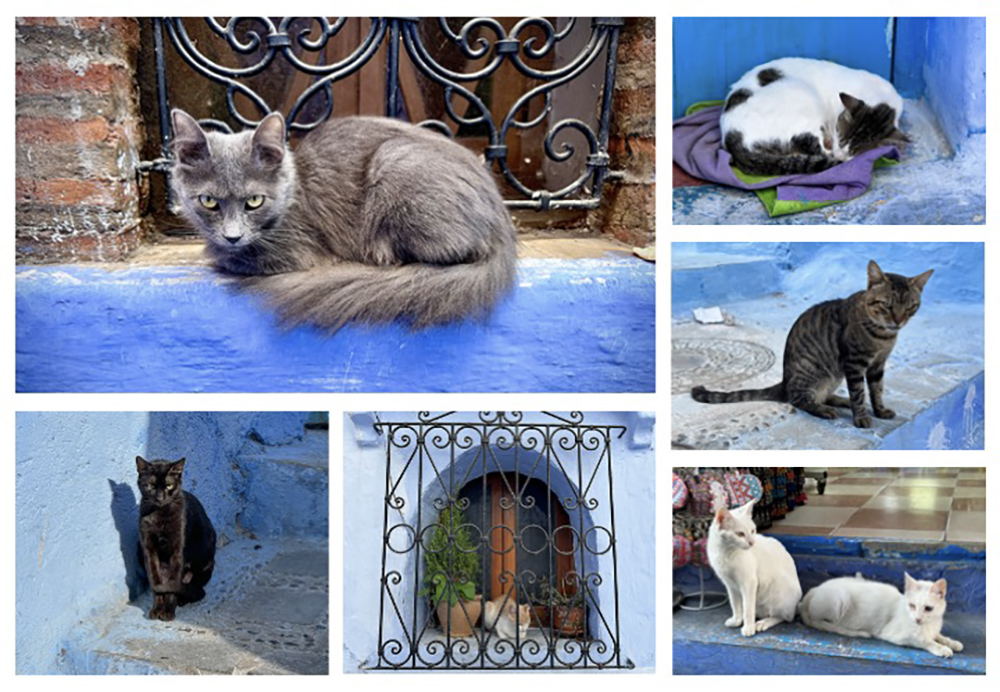
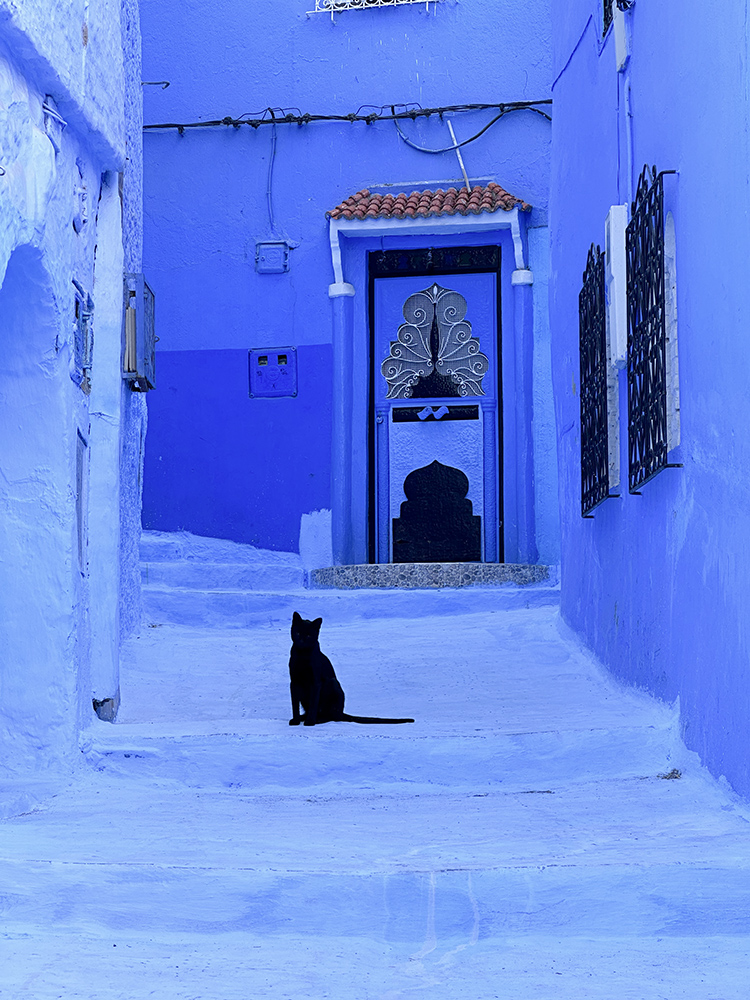
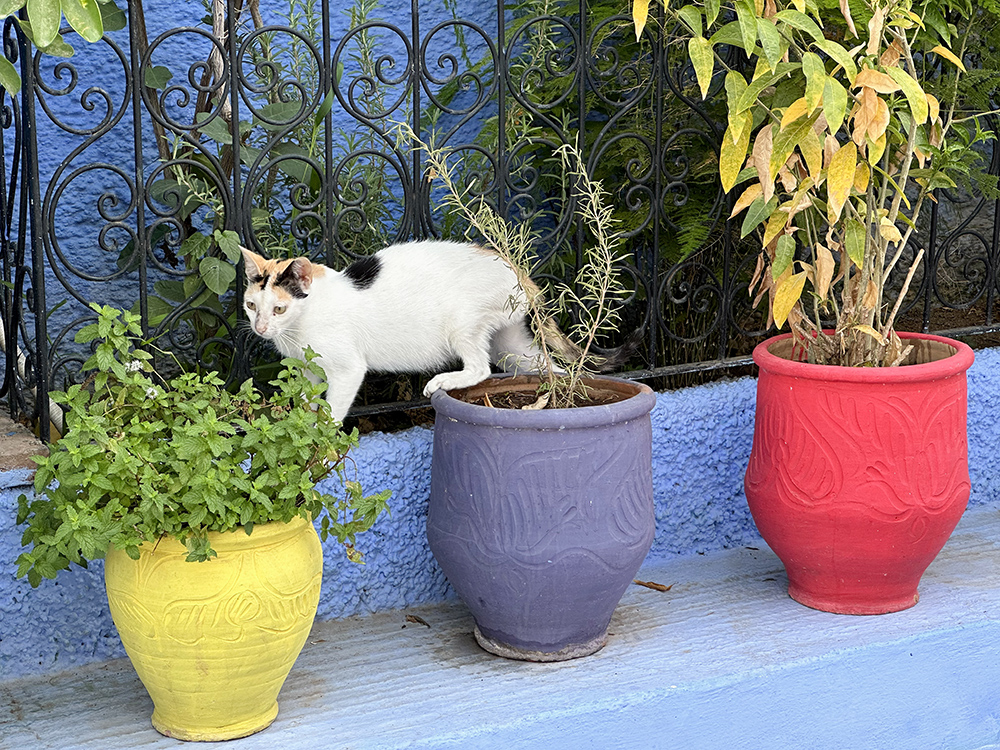
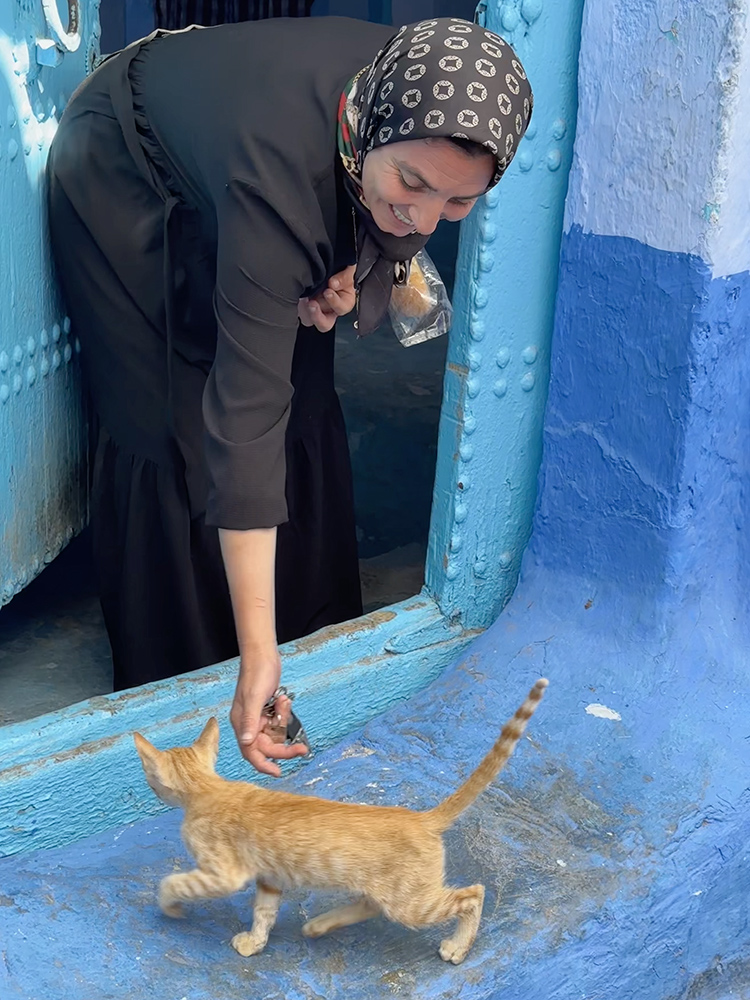
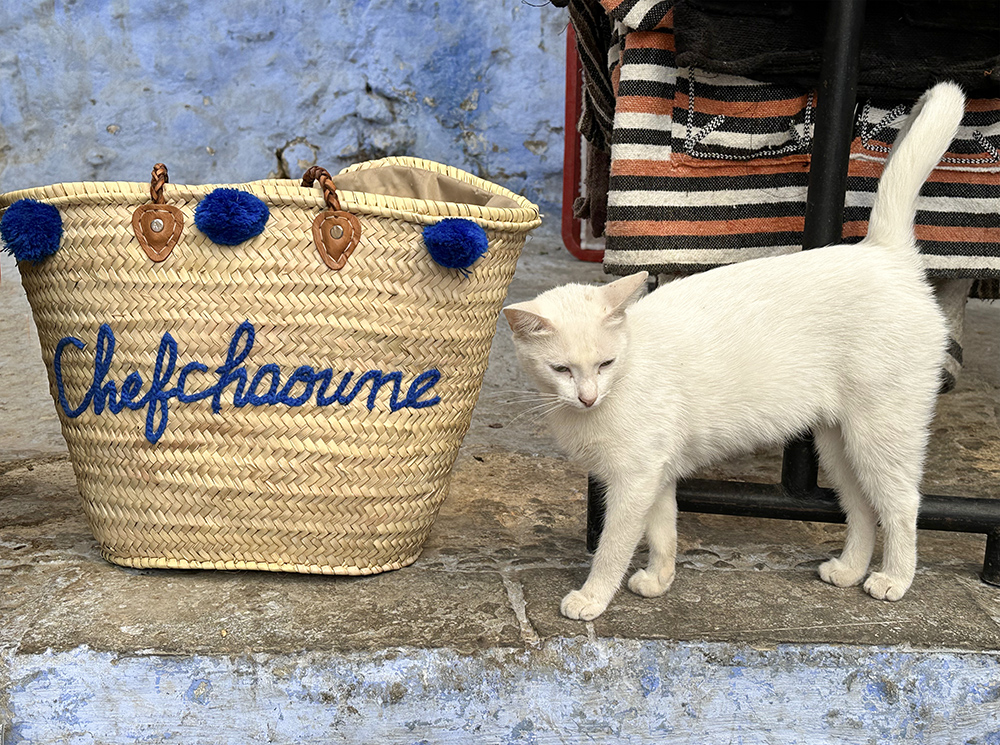
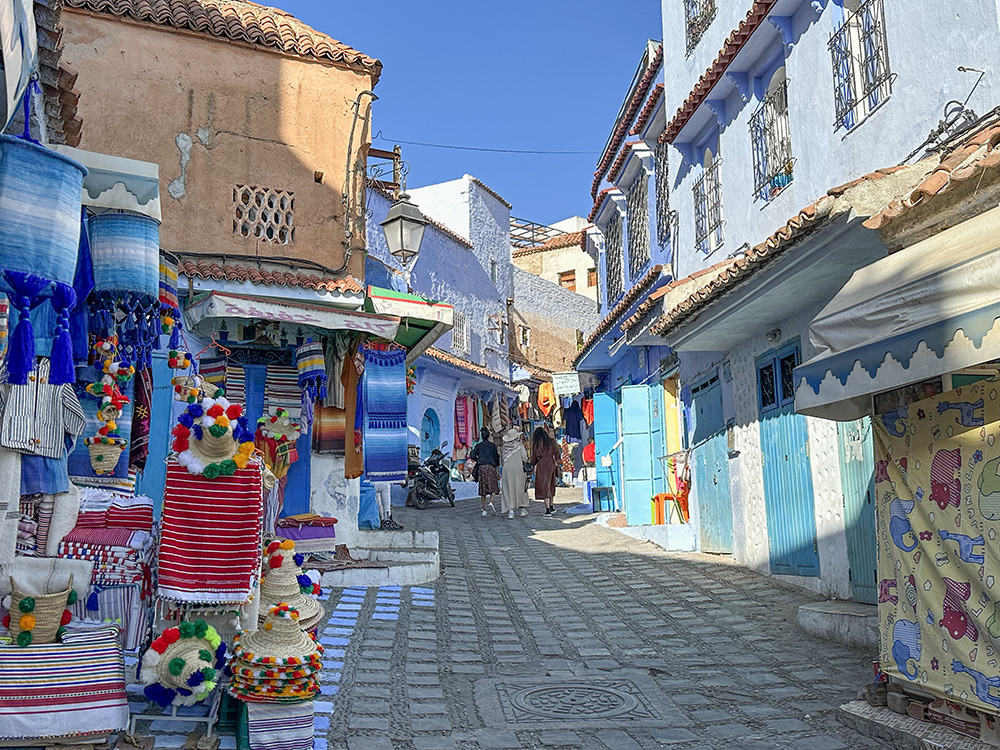
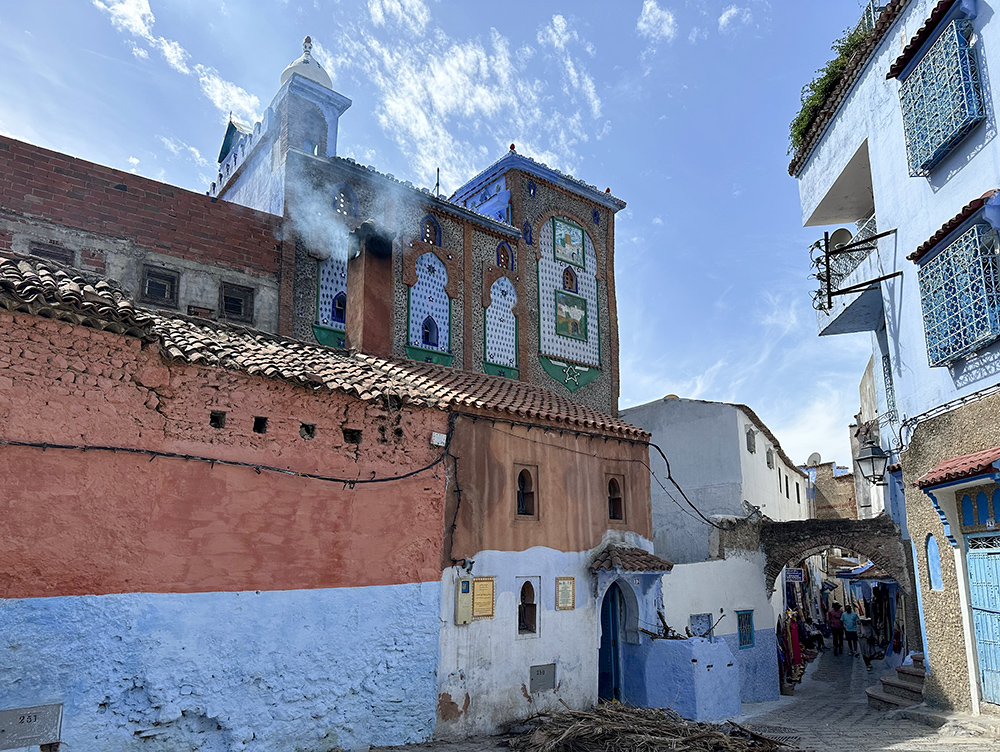
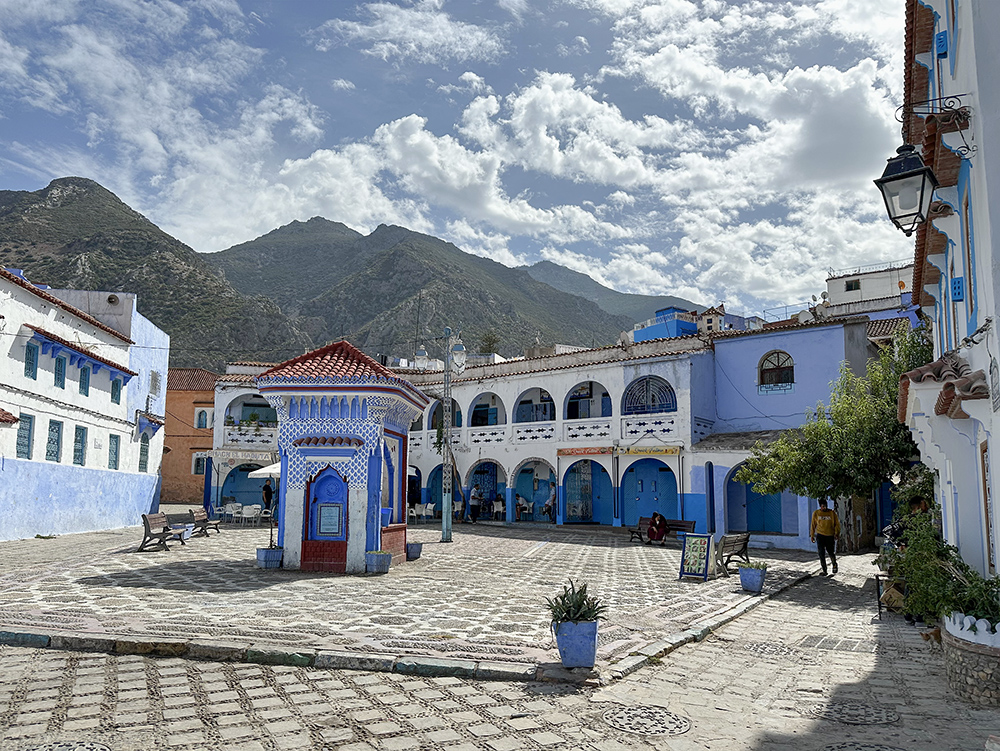
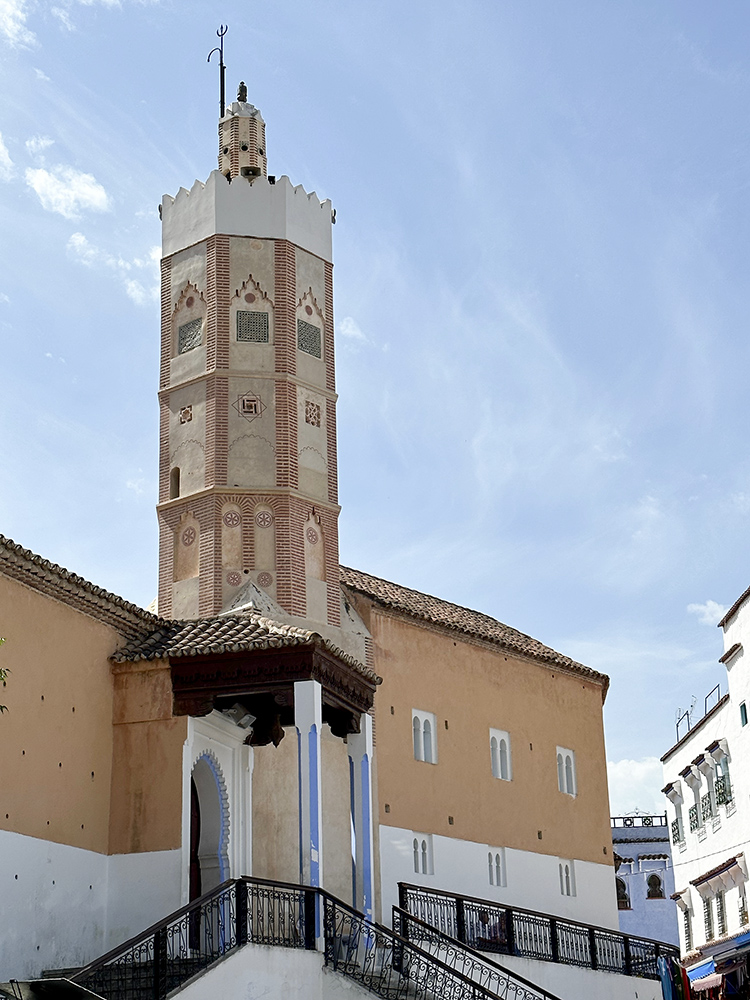
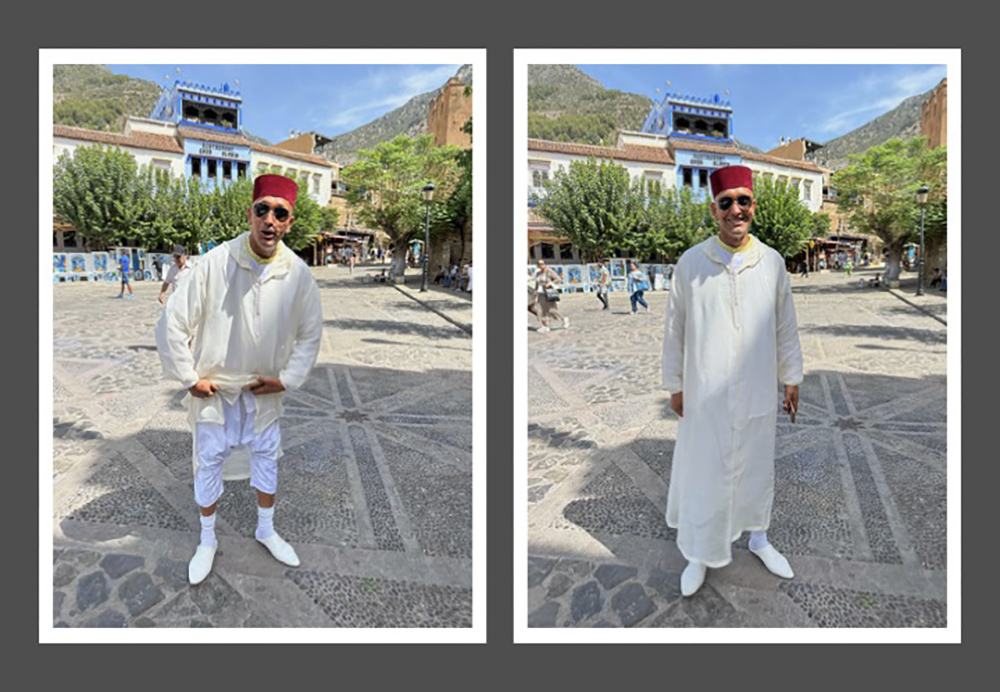
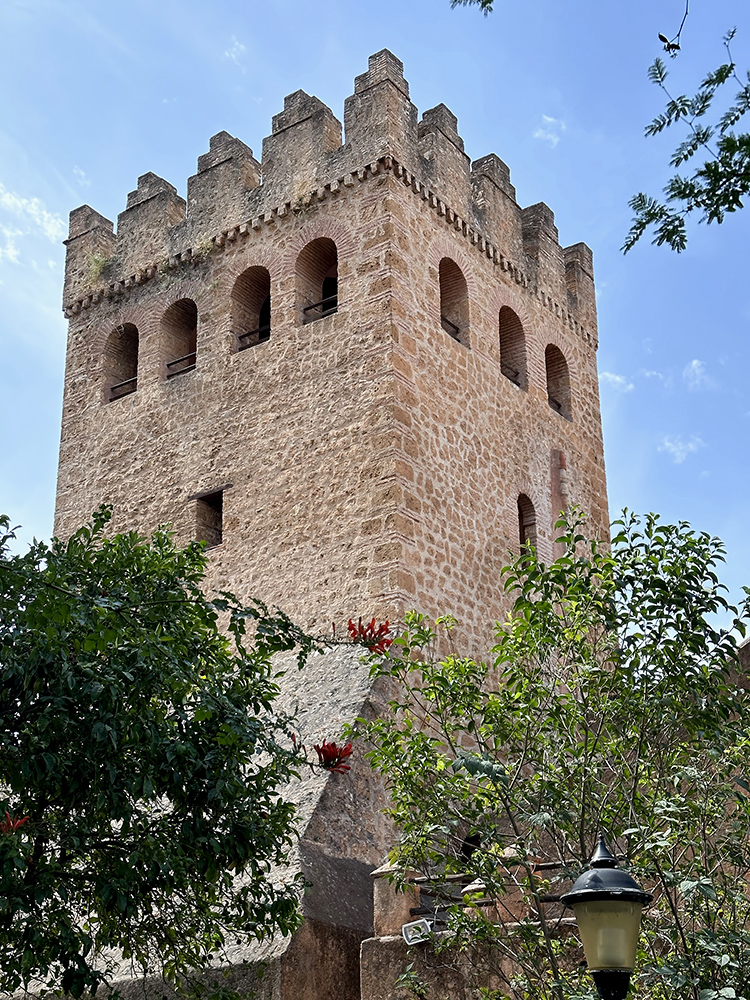
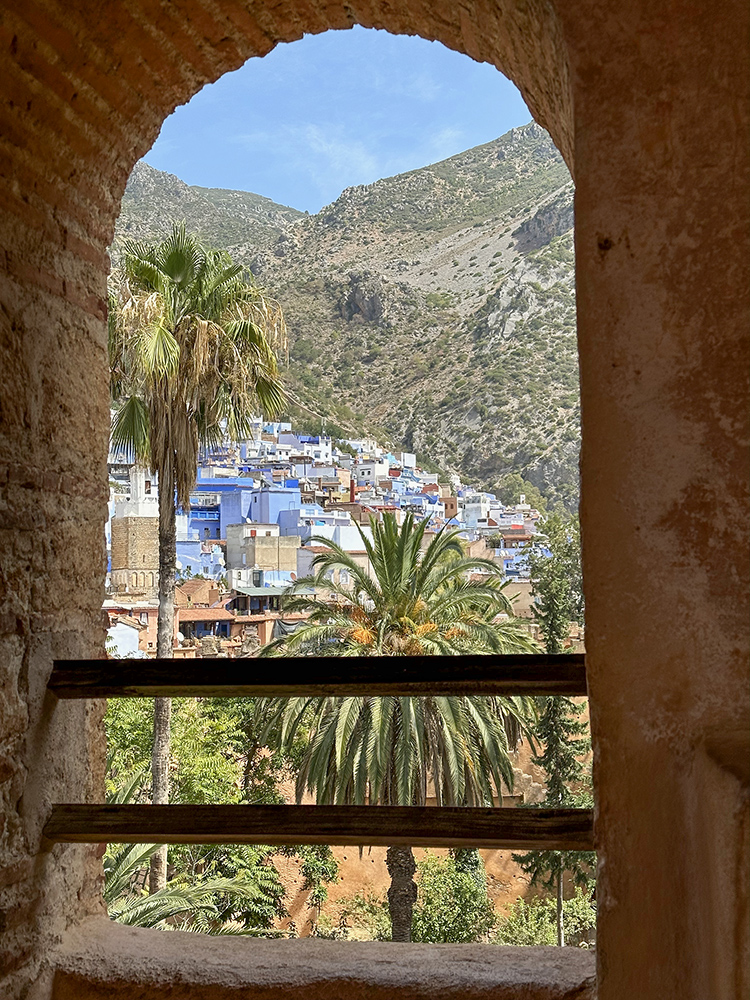
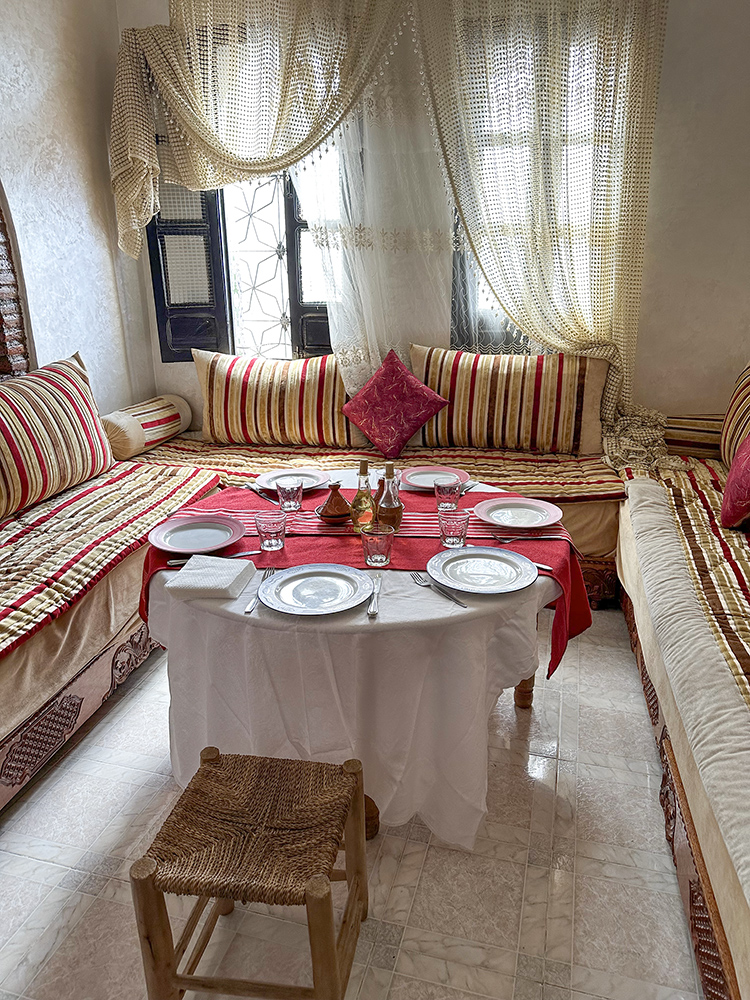
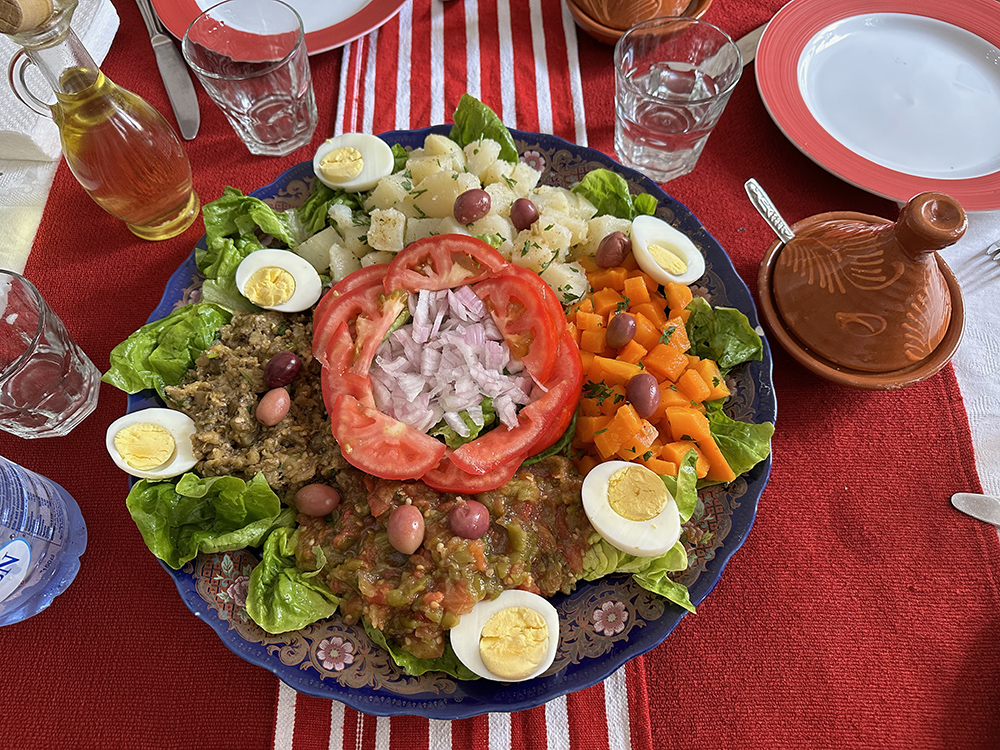
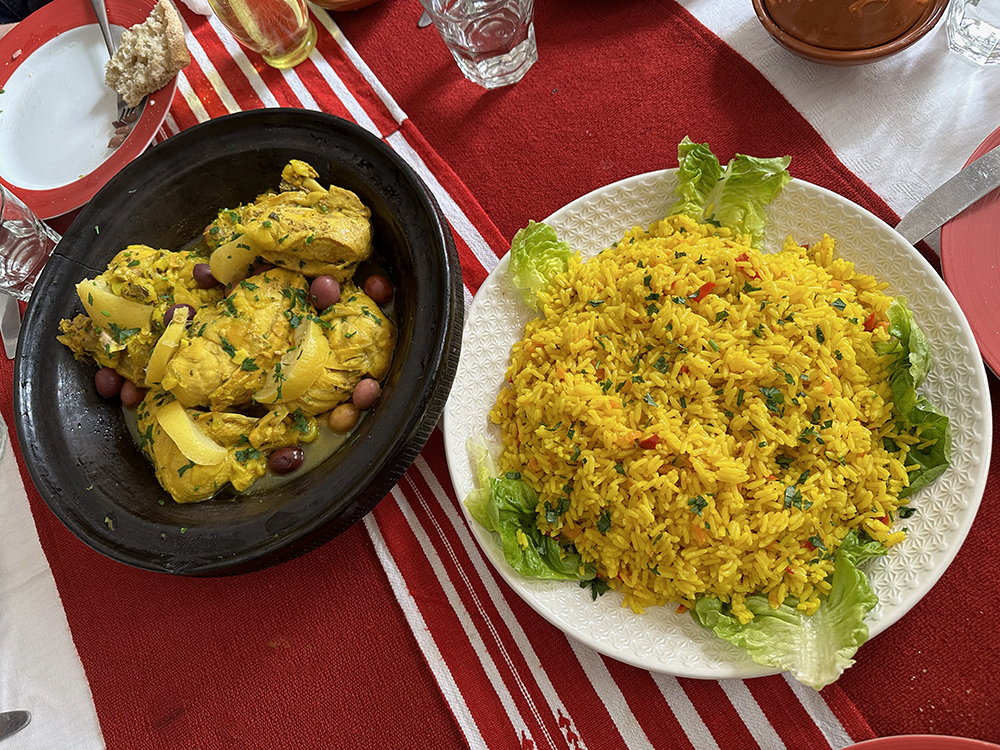
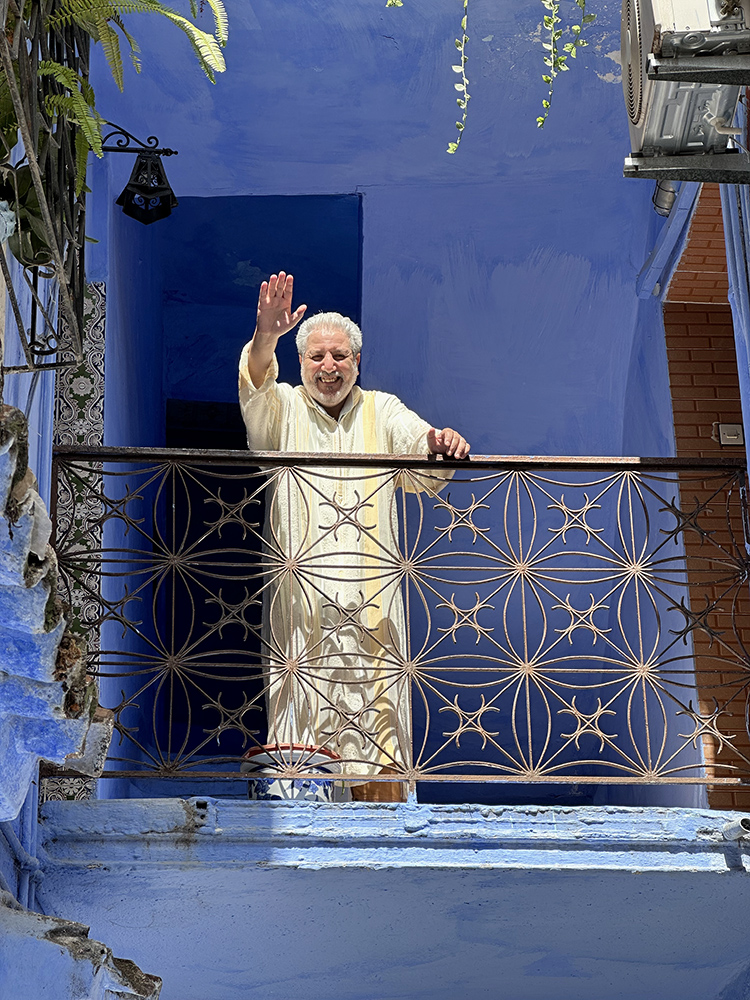
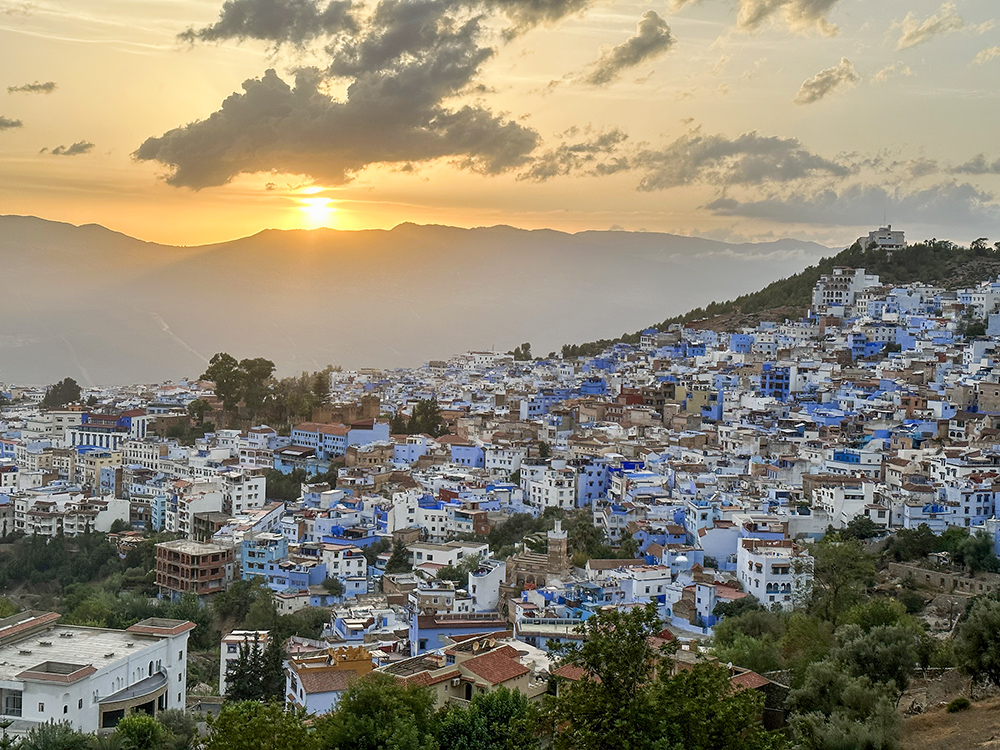
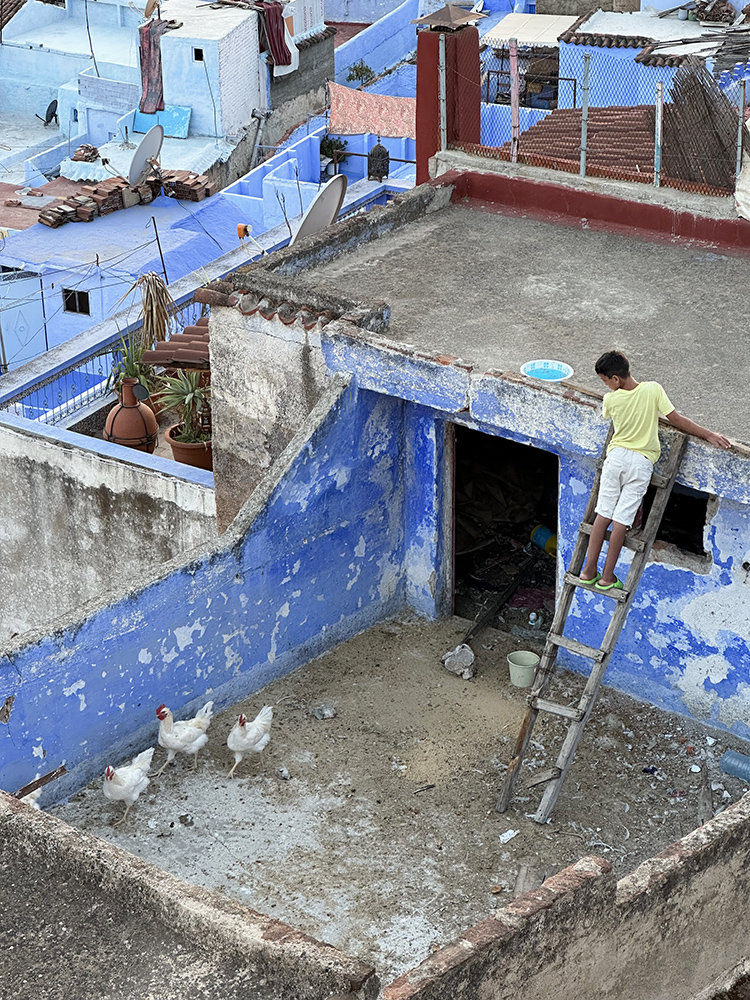
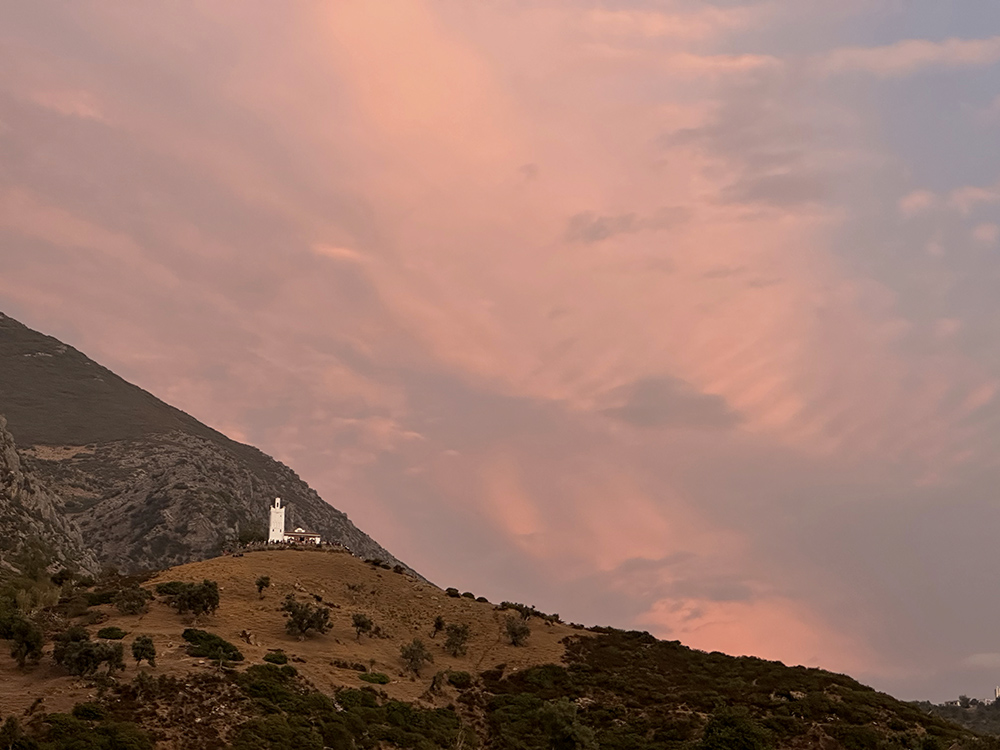
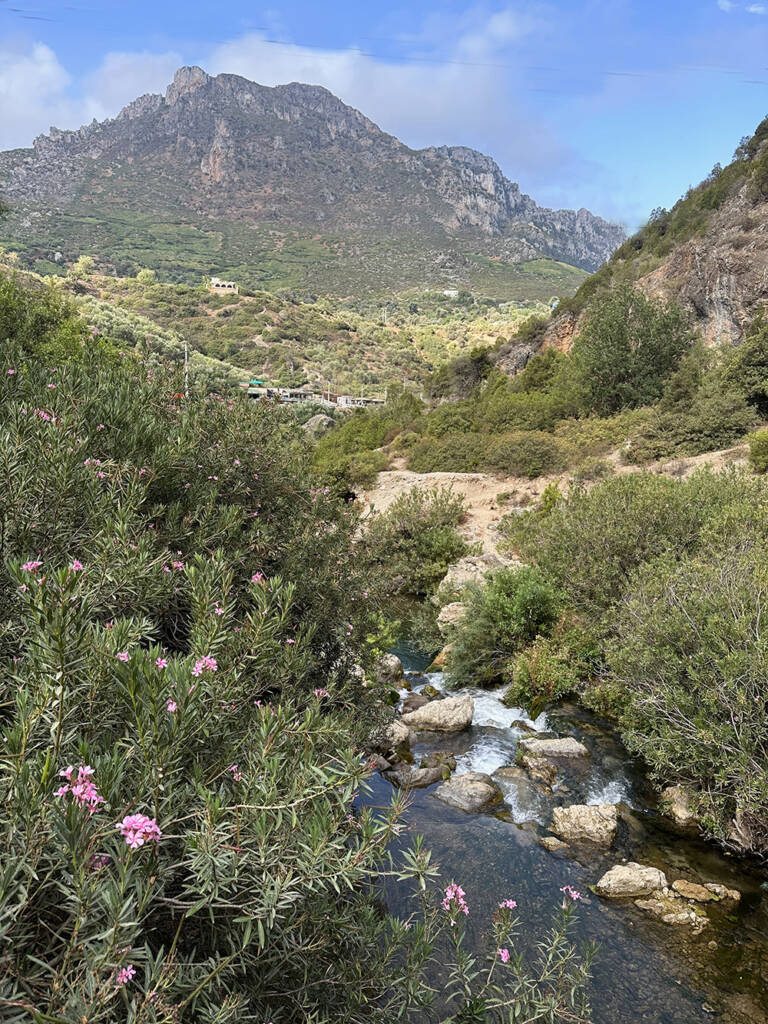
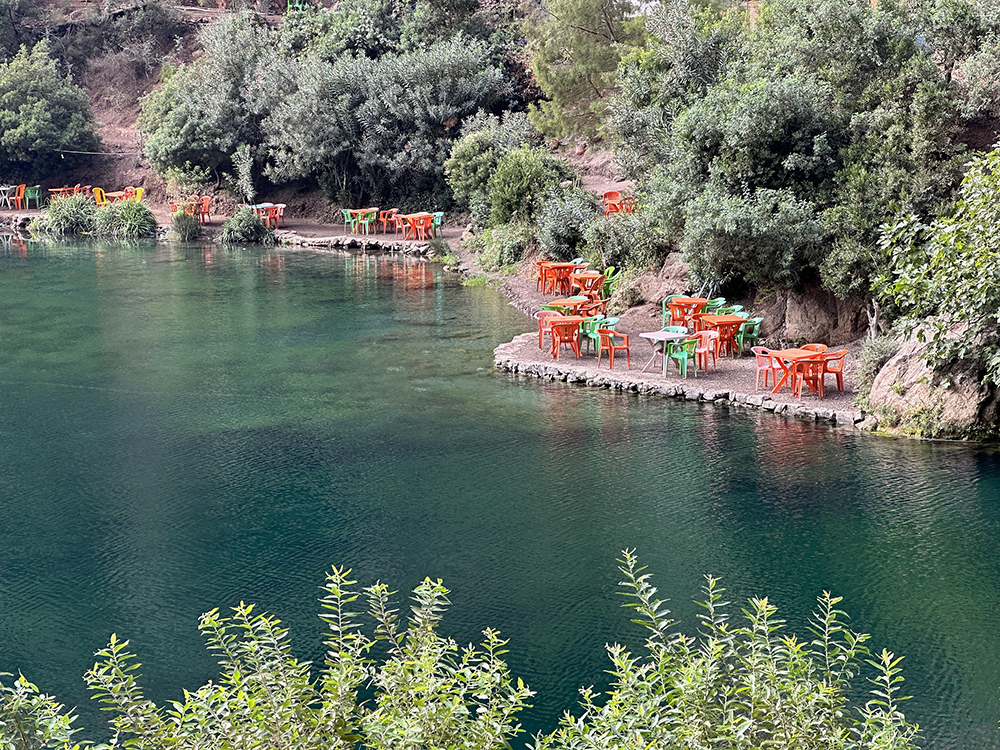
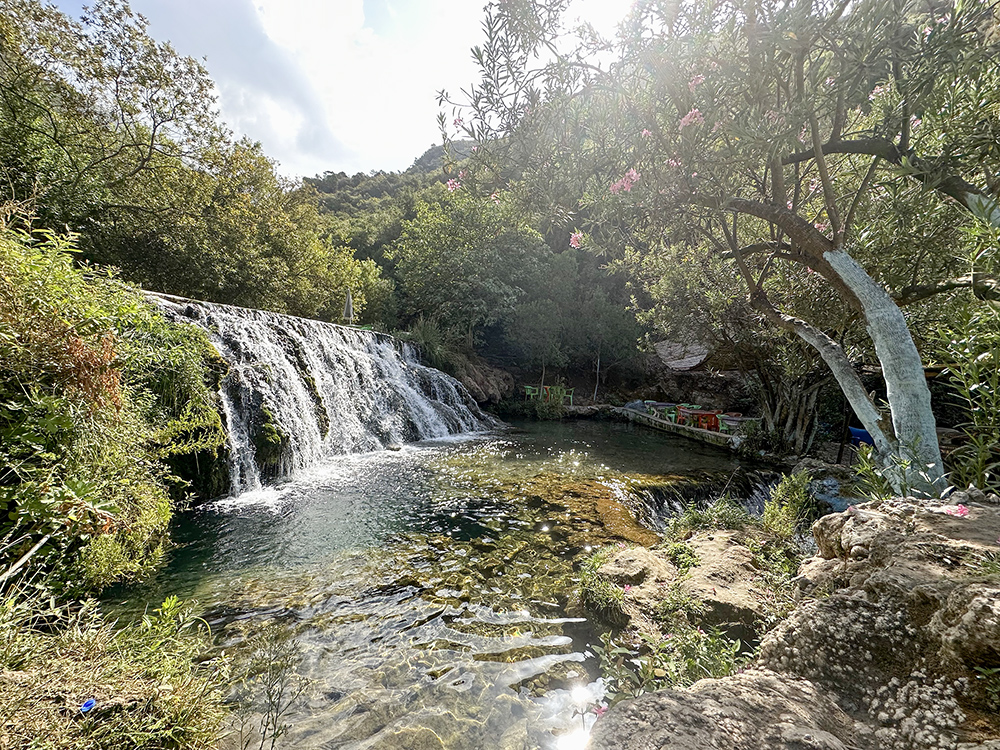
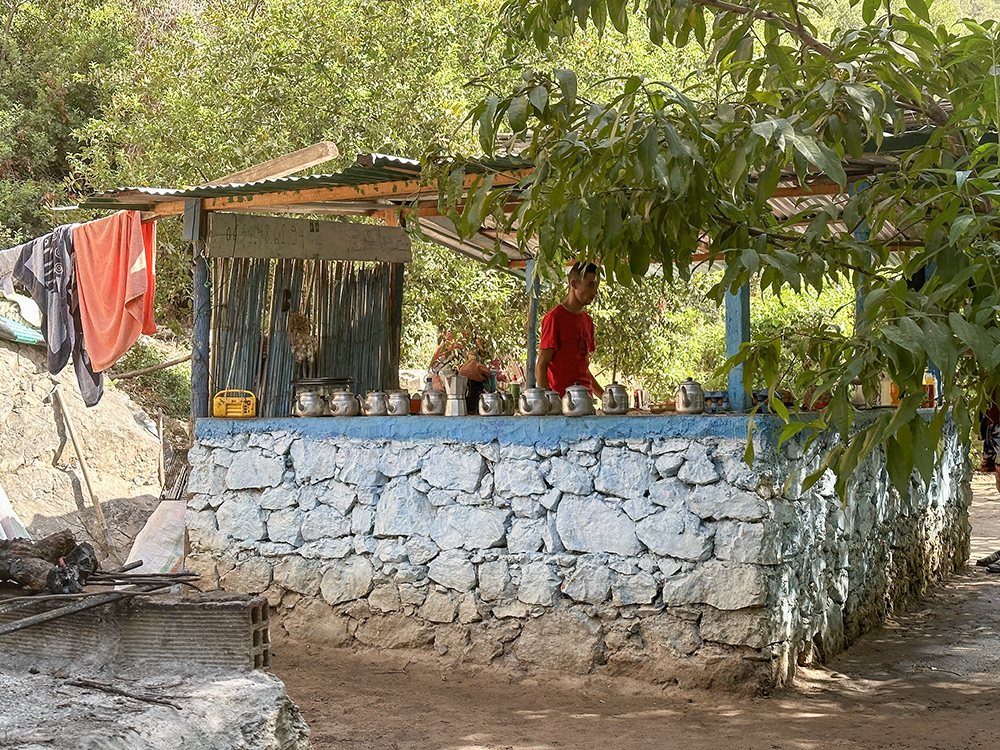
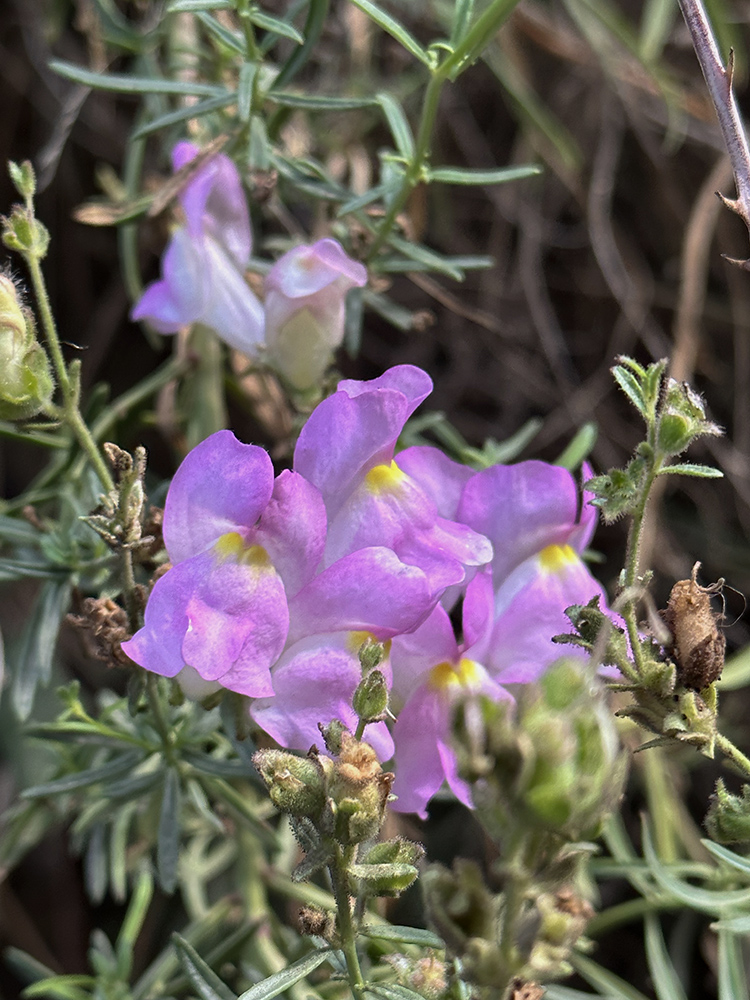
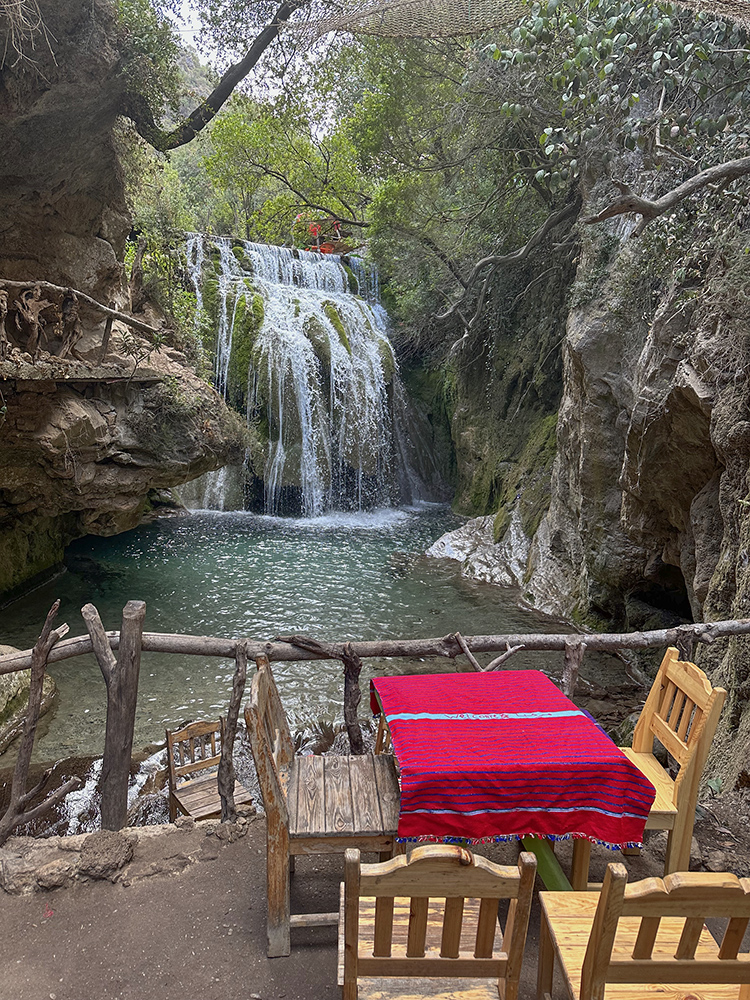
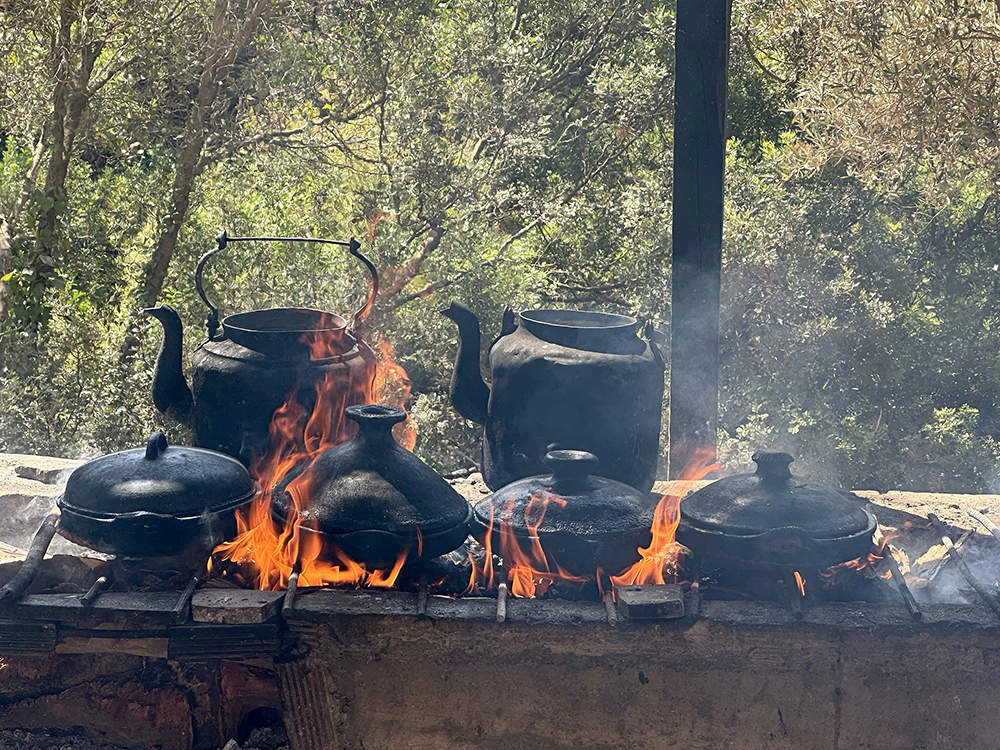
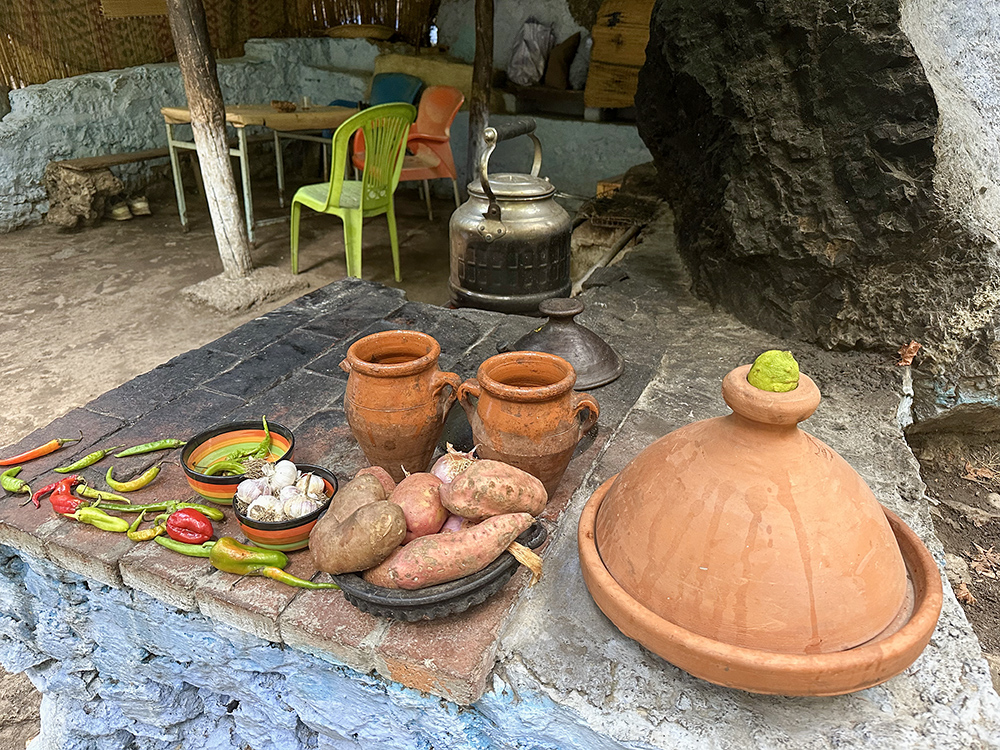
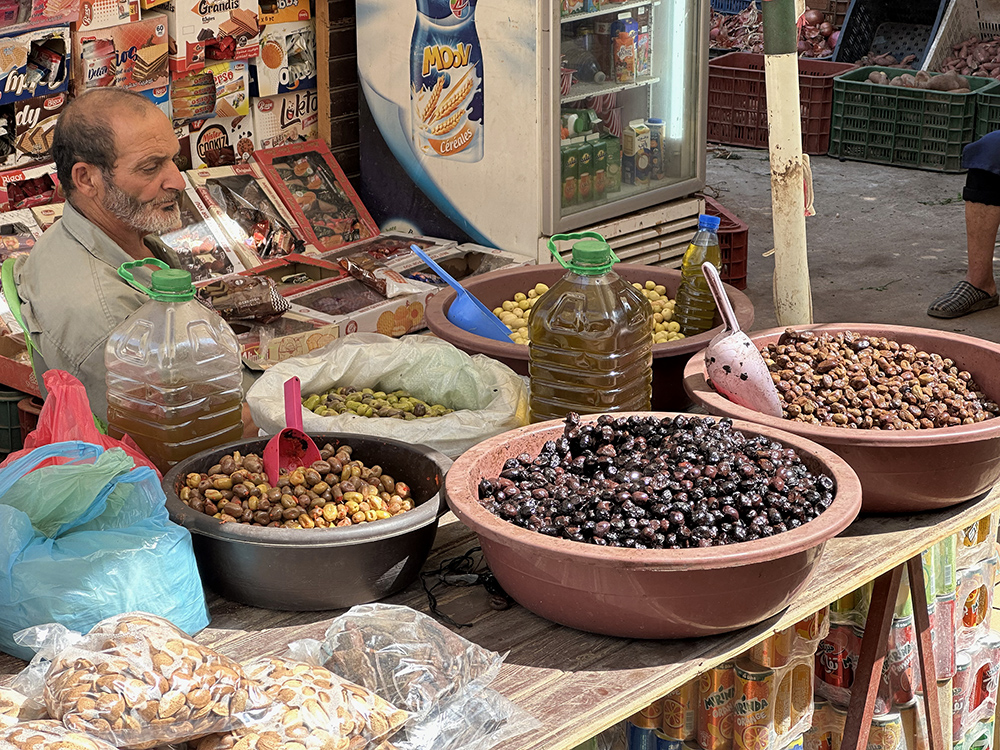
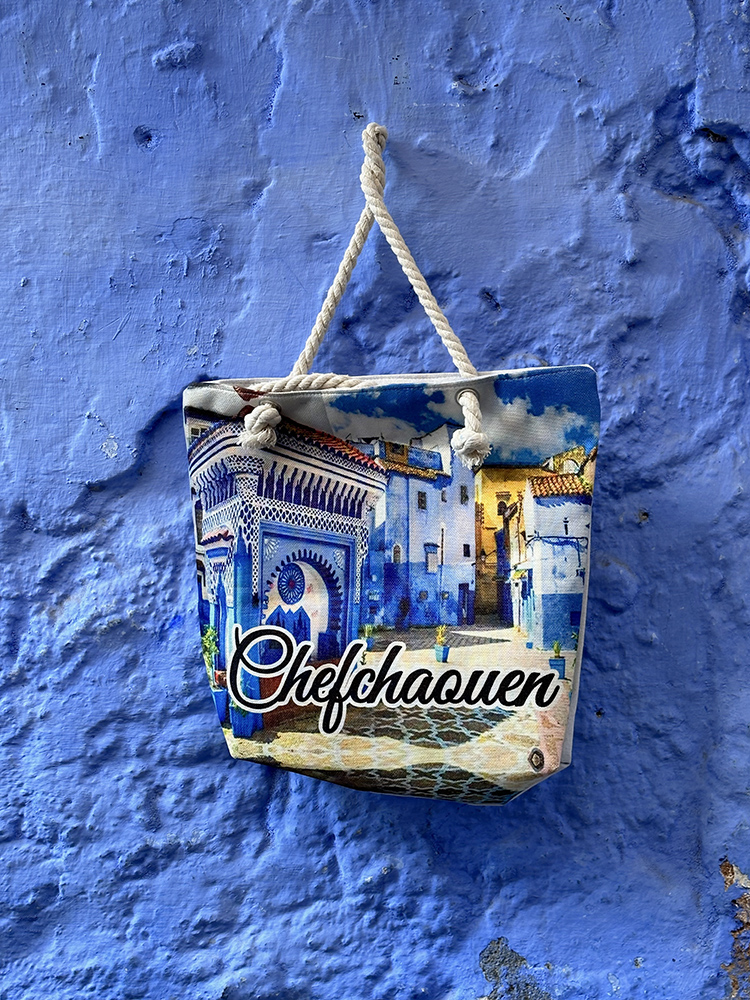
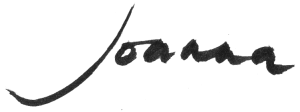
Loved reading your story. It makes me very much want to visit. Beautiful photos and such a well organised tour. Thank you for sharing.
How beautiful is that blue. I really enjoyed your blog Joanna, felt like I had journeyed a little in Morocco with you. Thanks for sharing xx